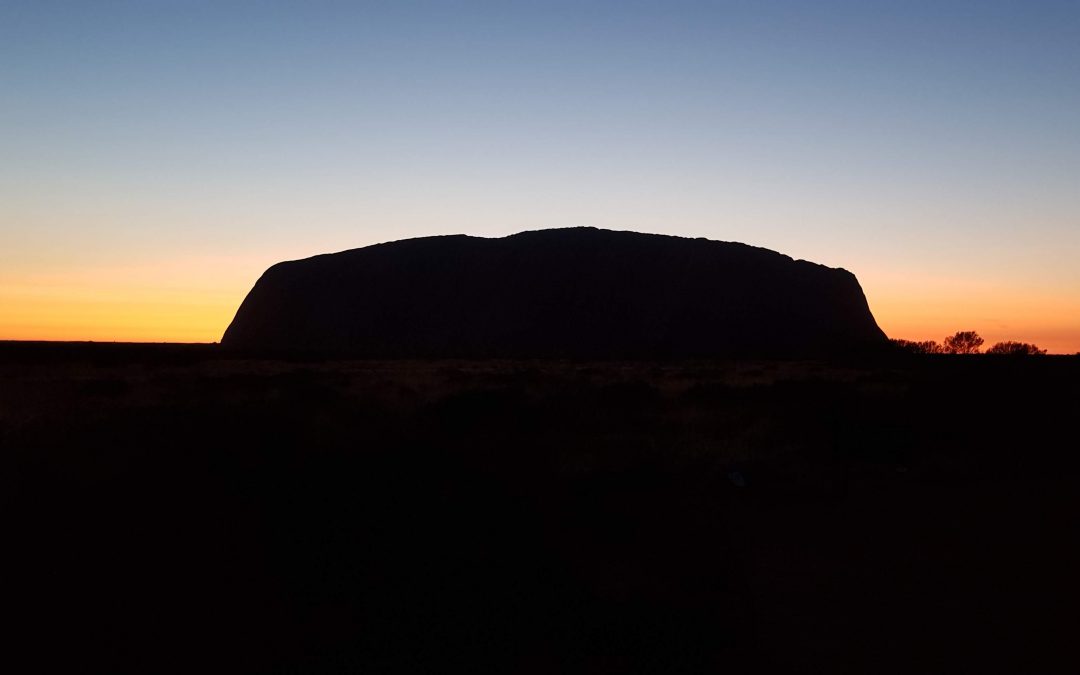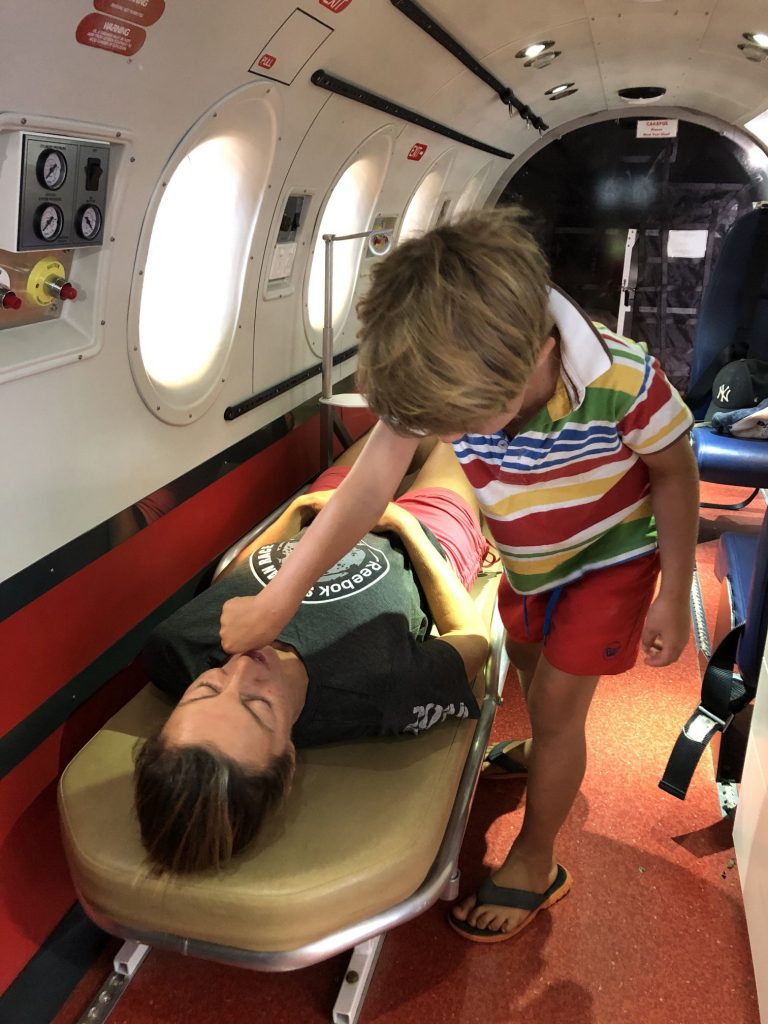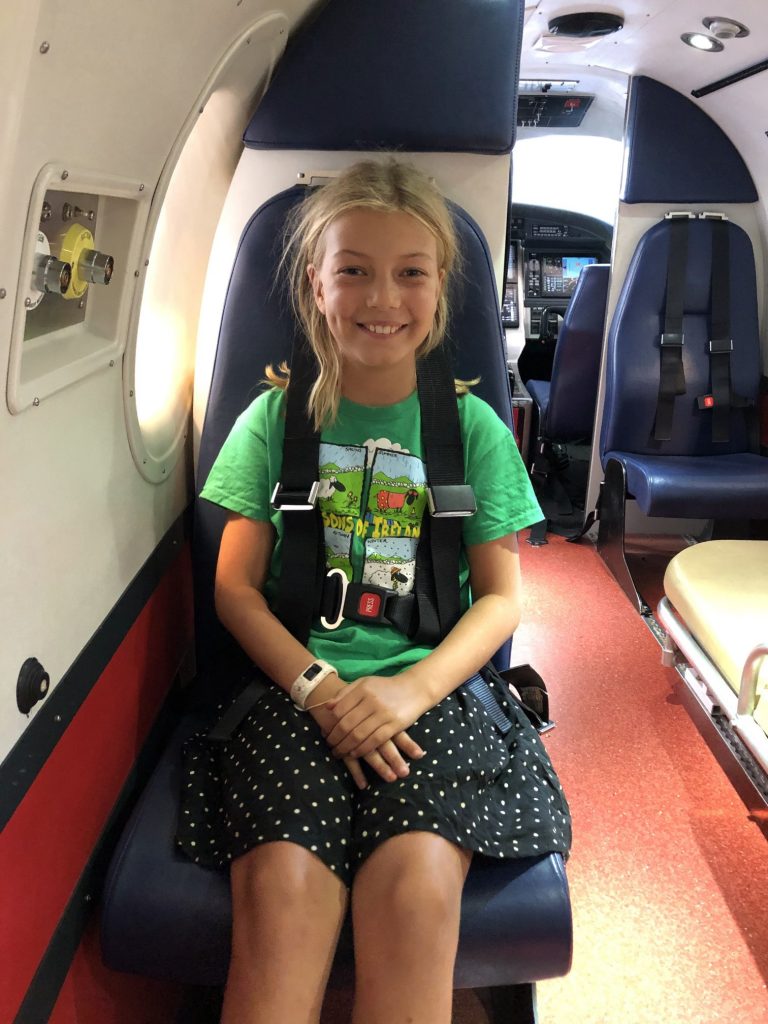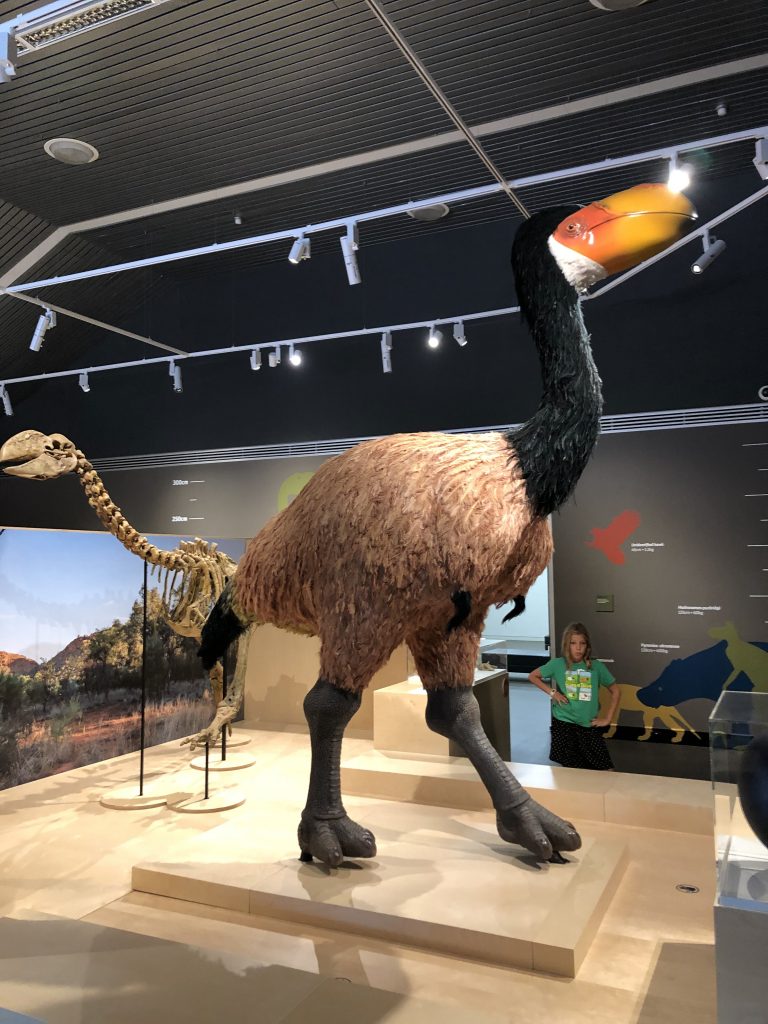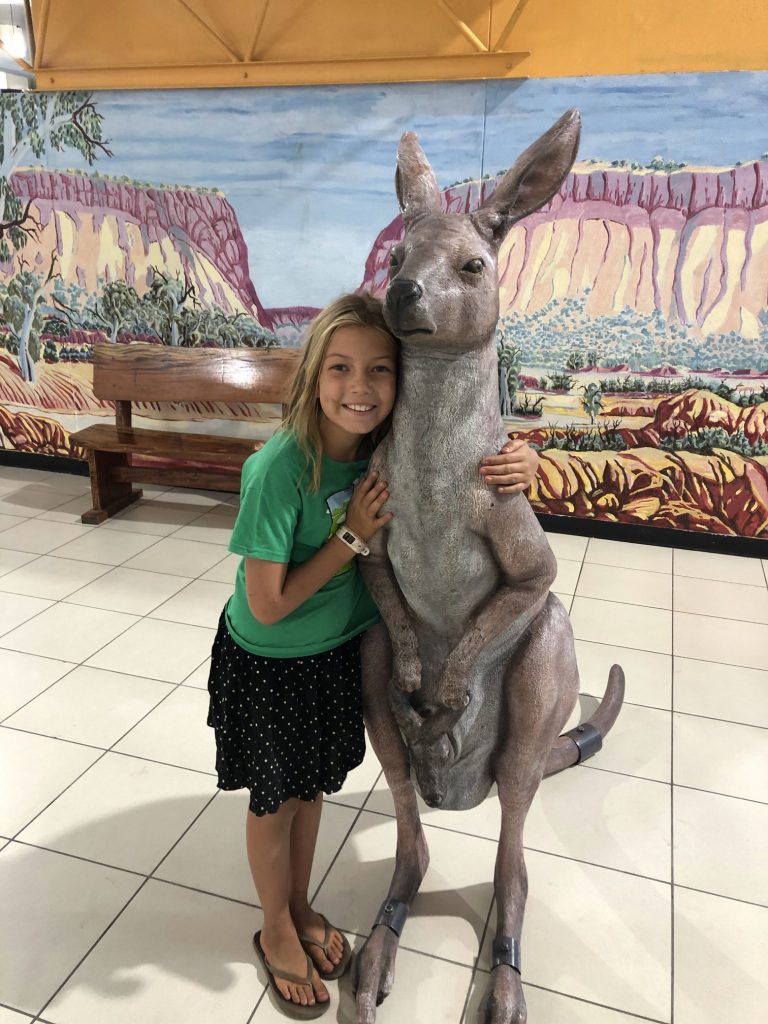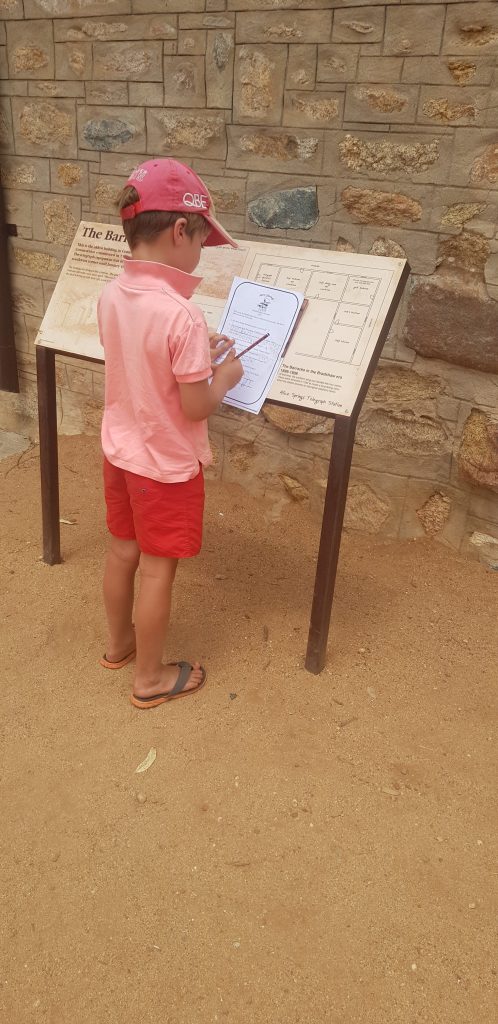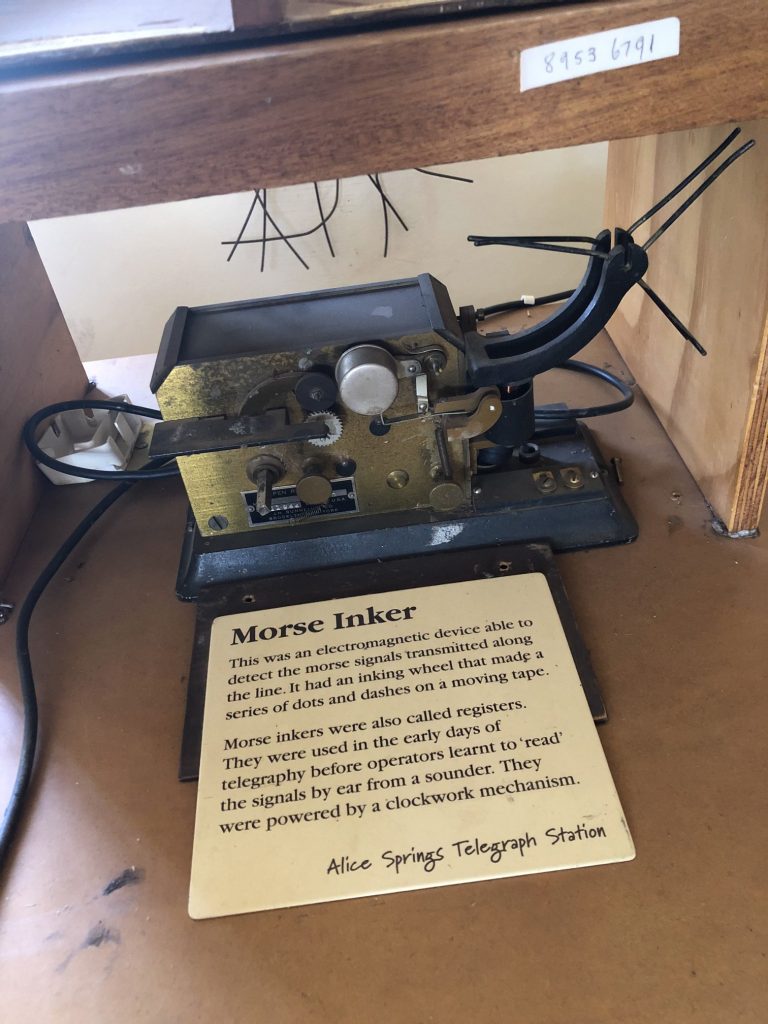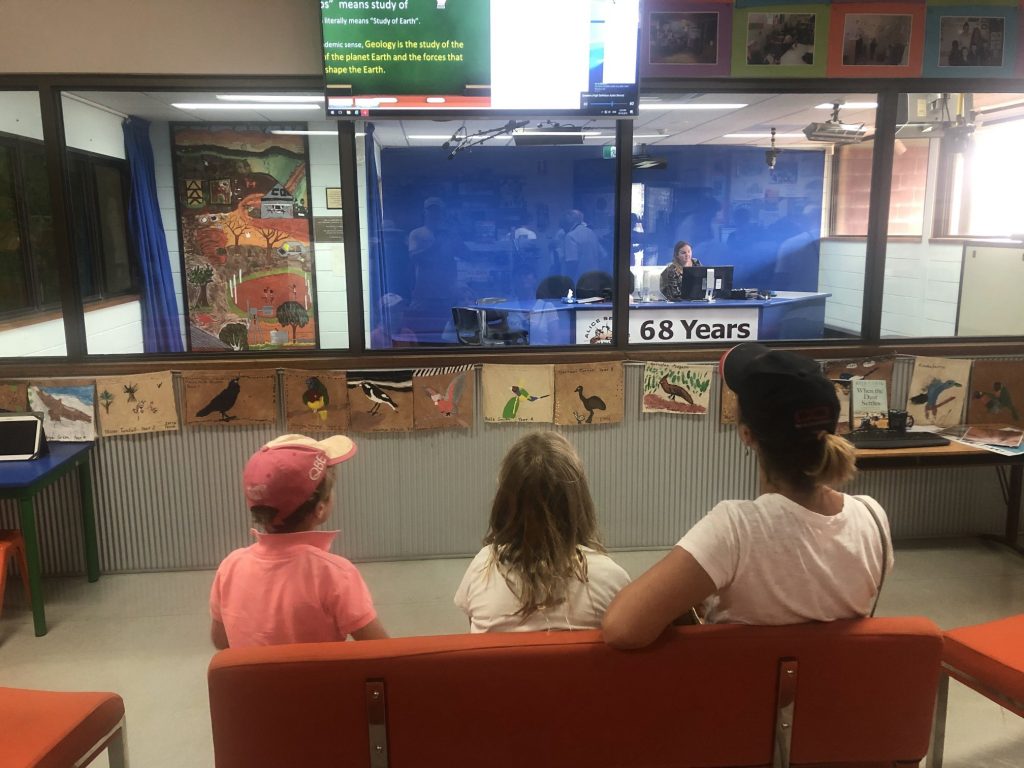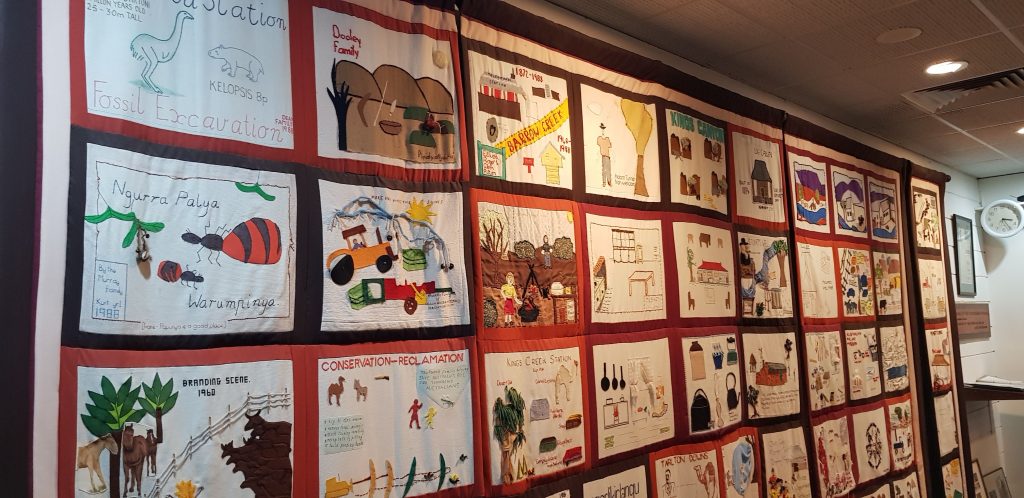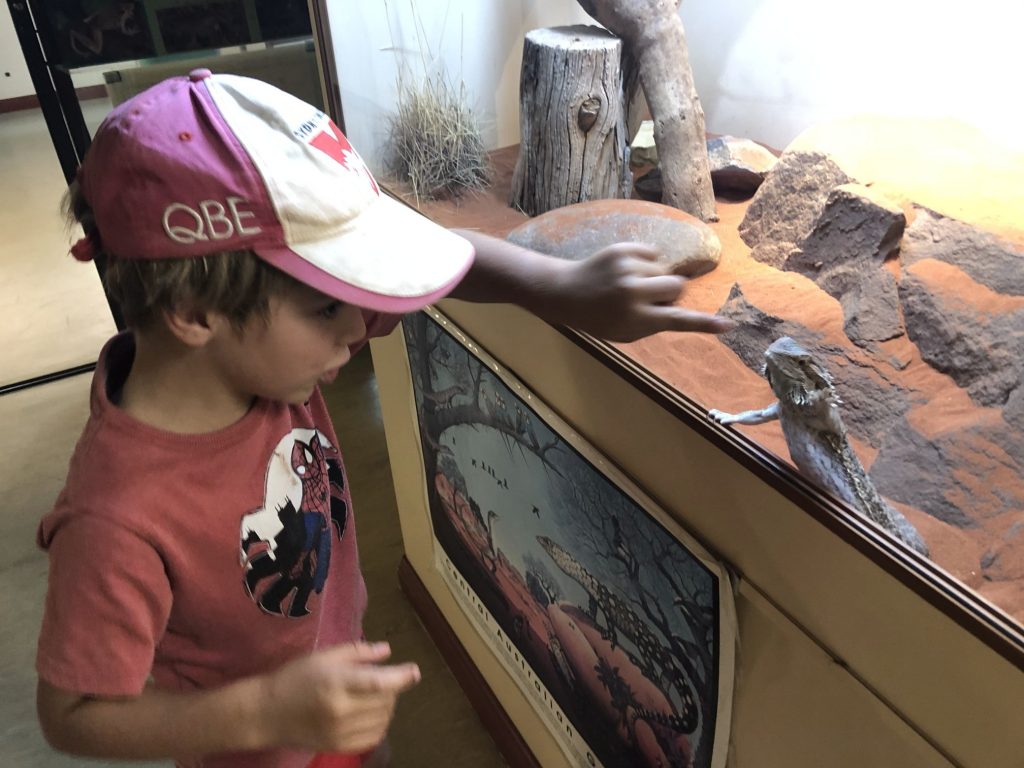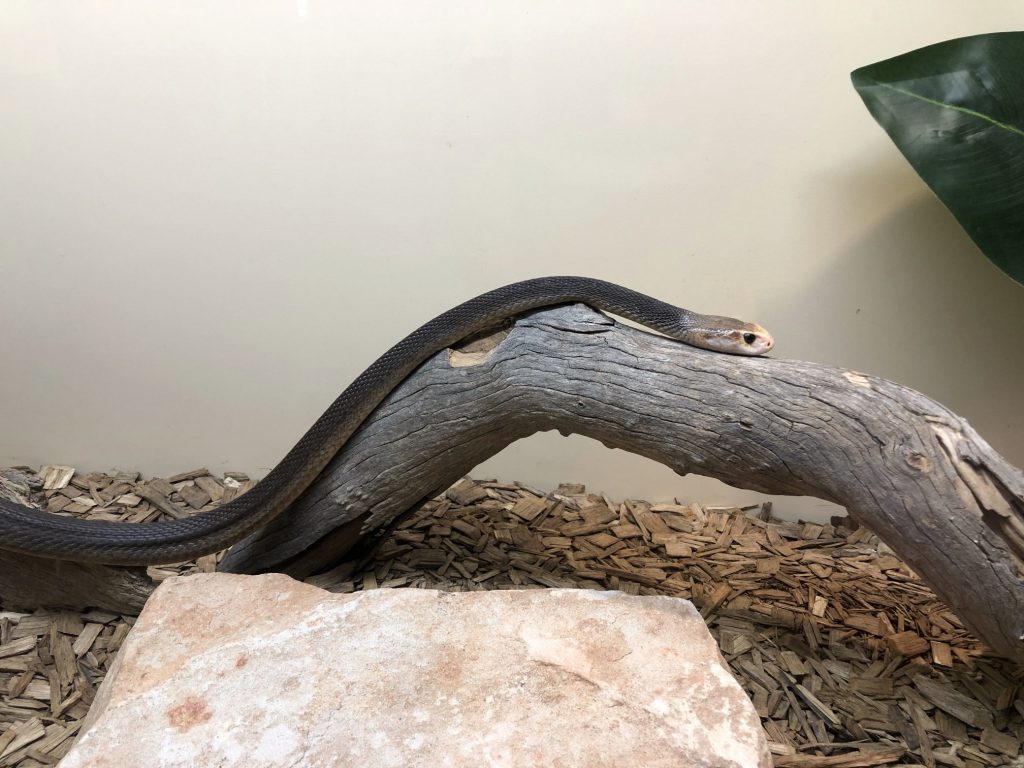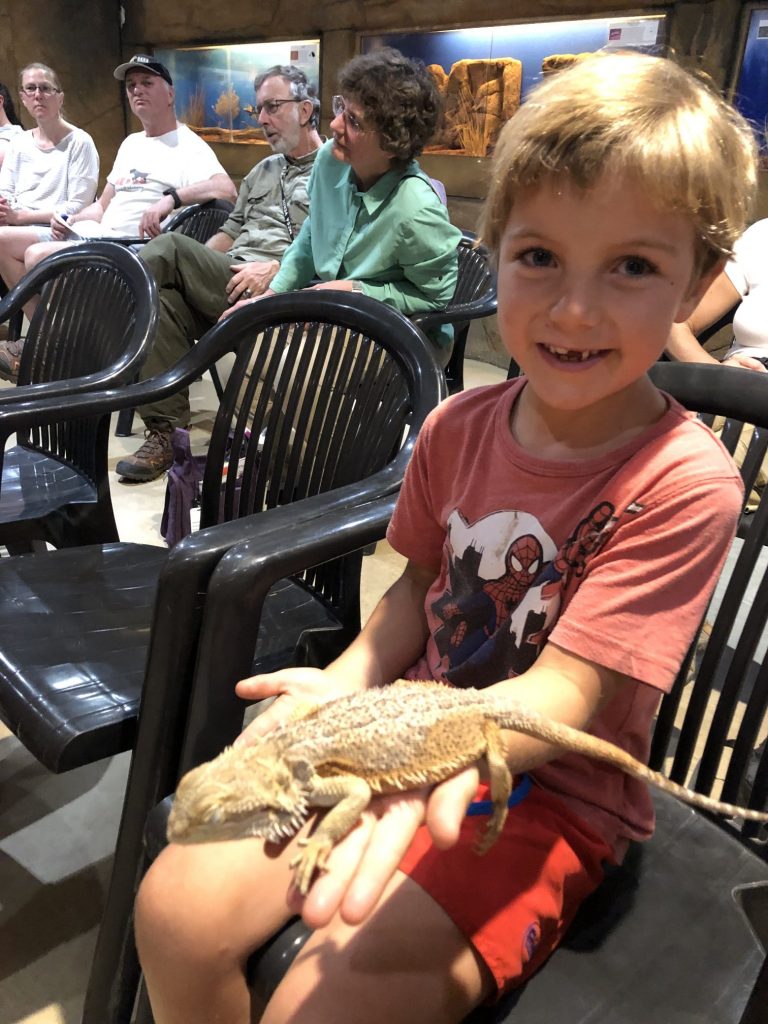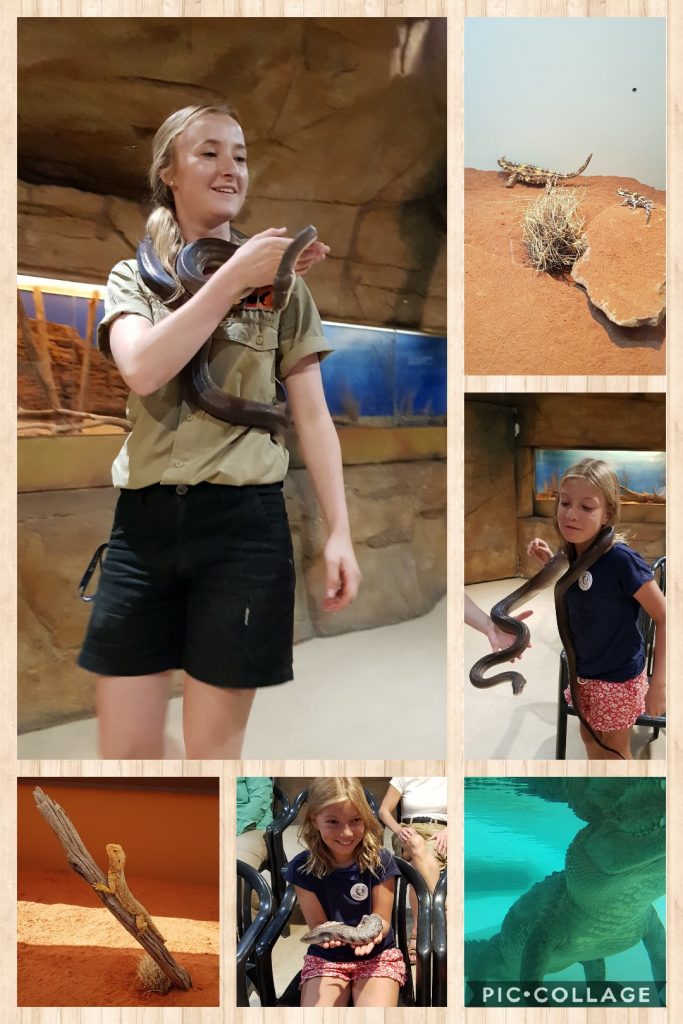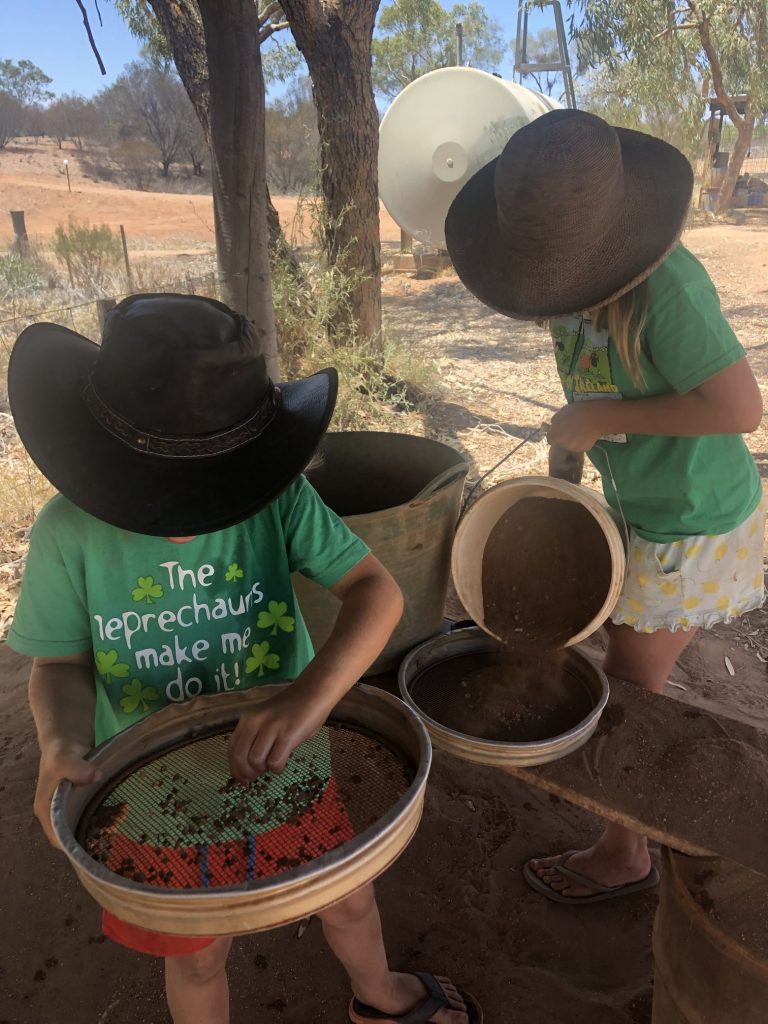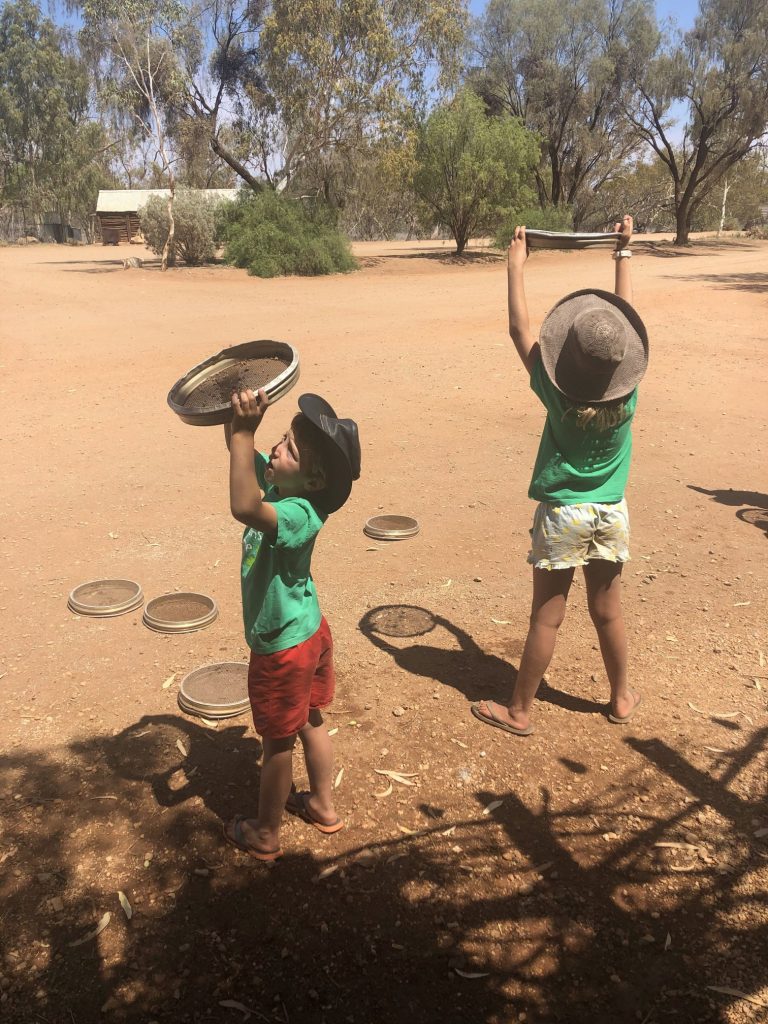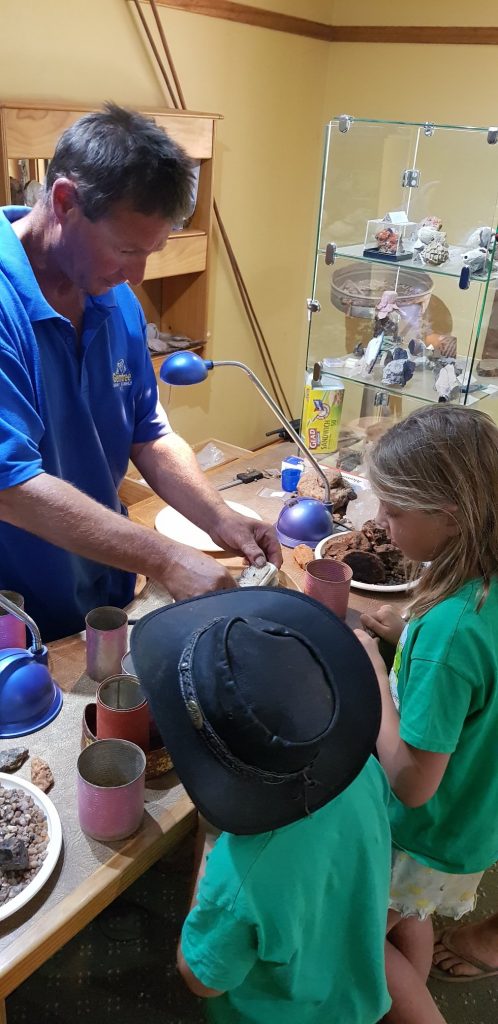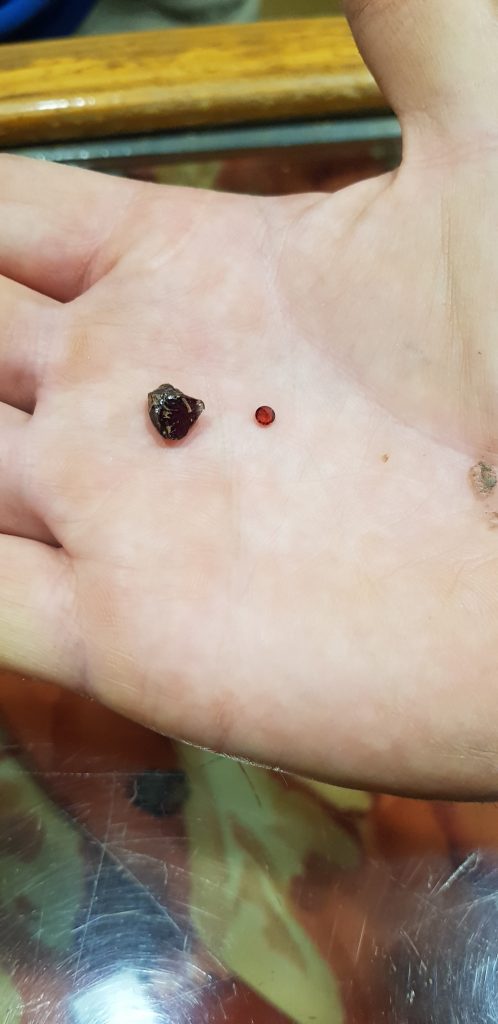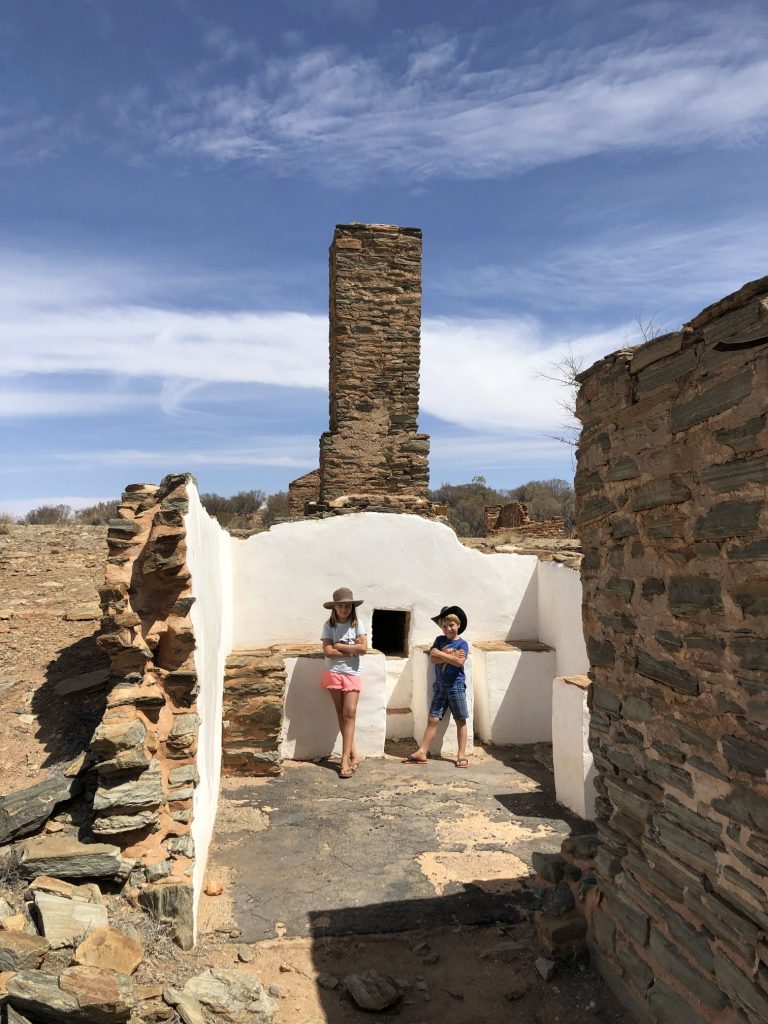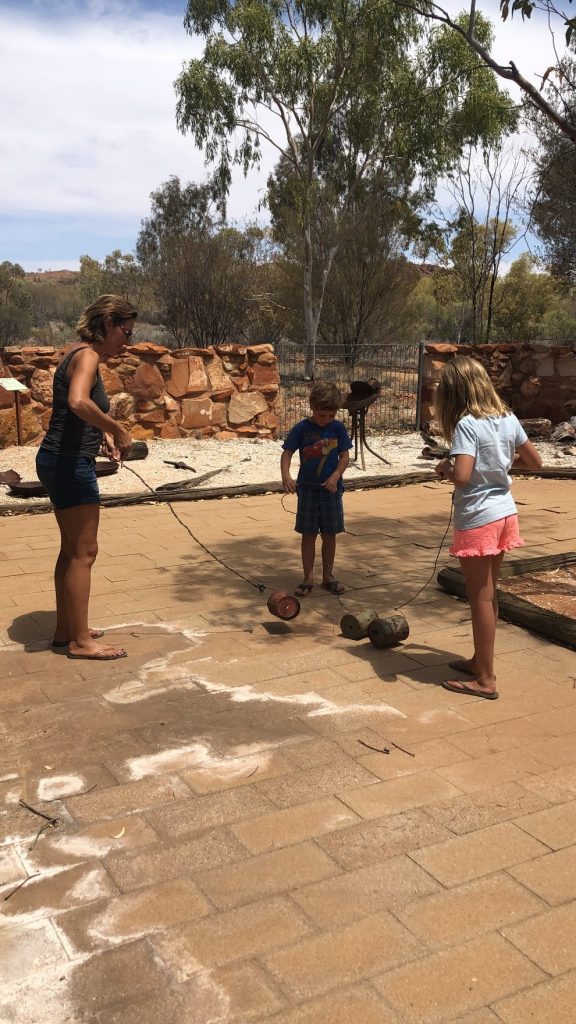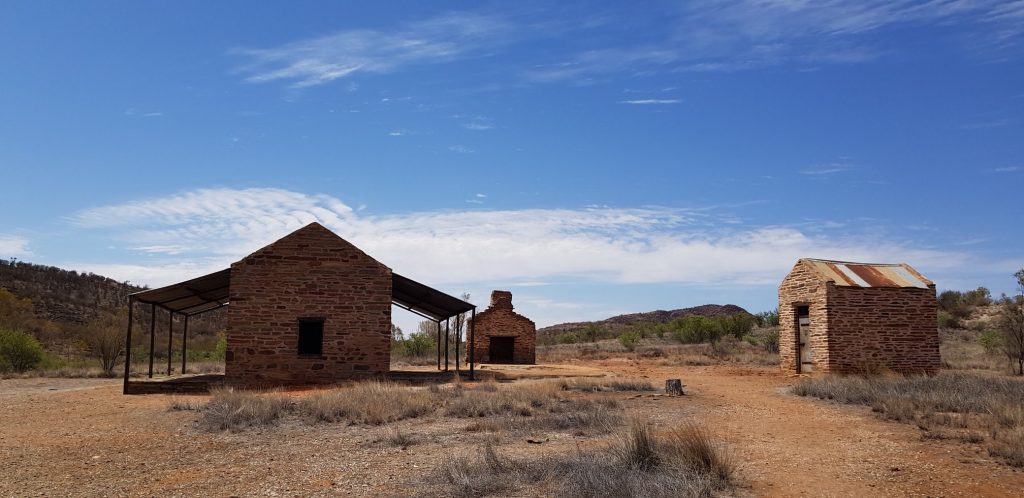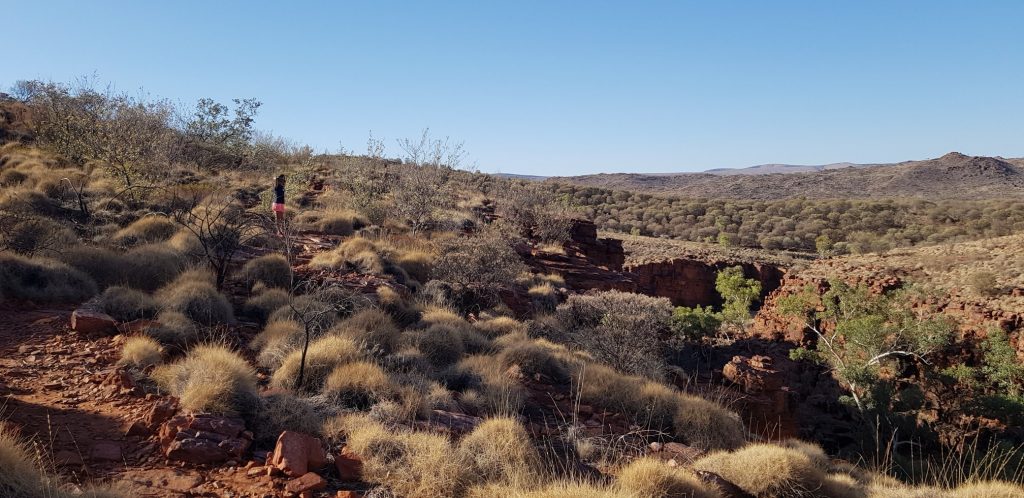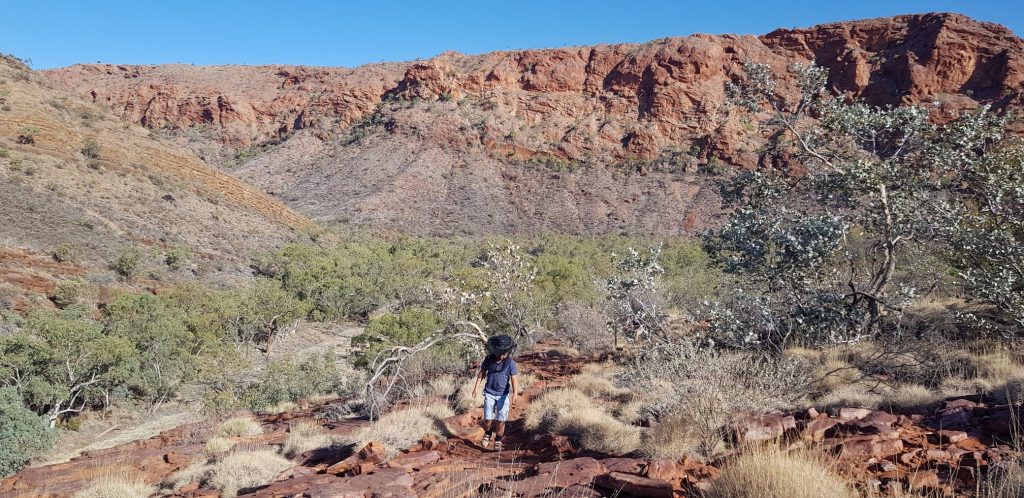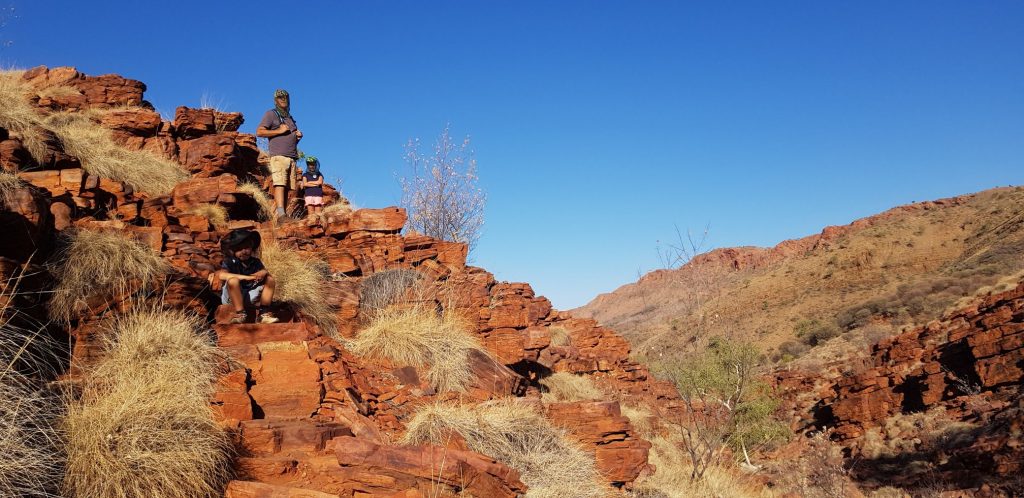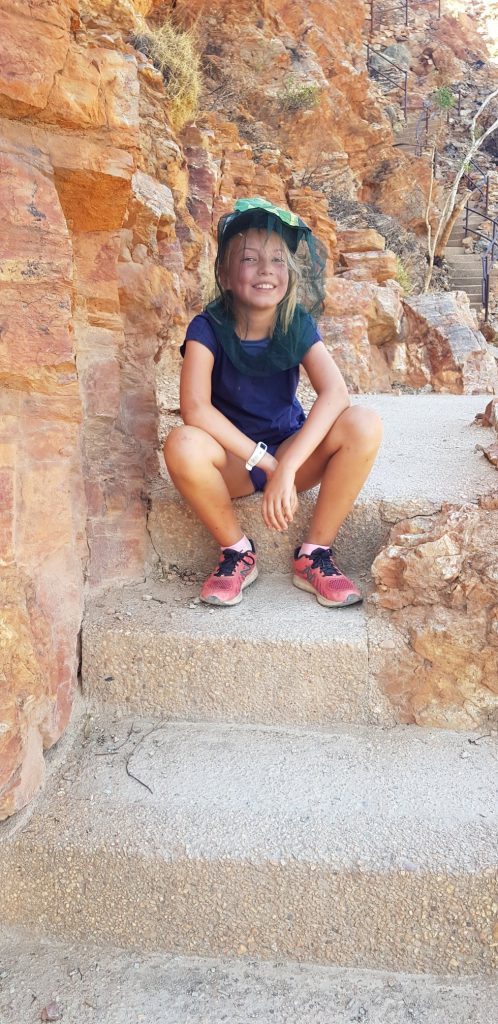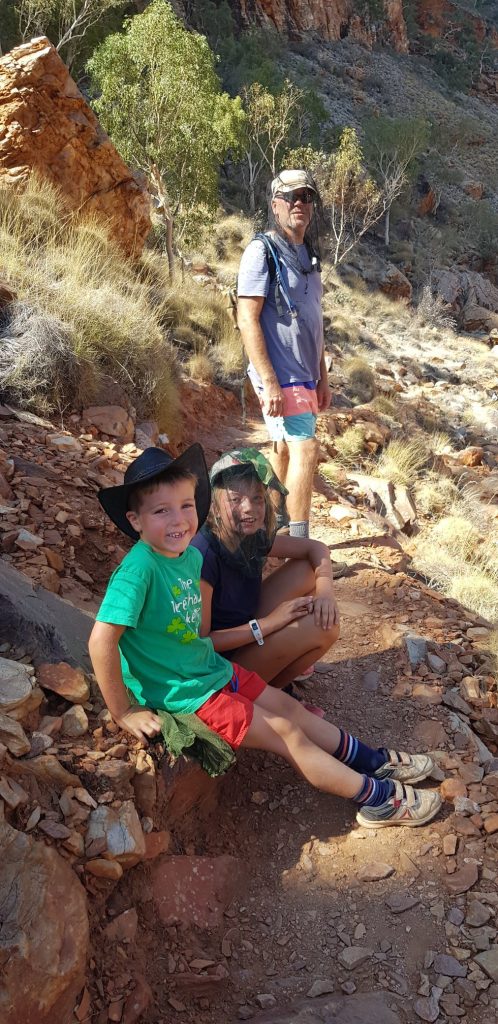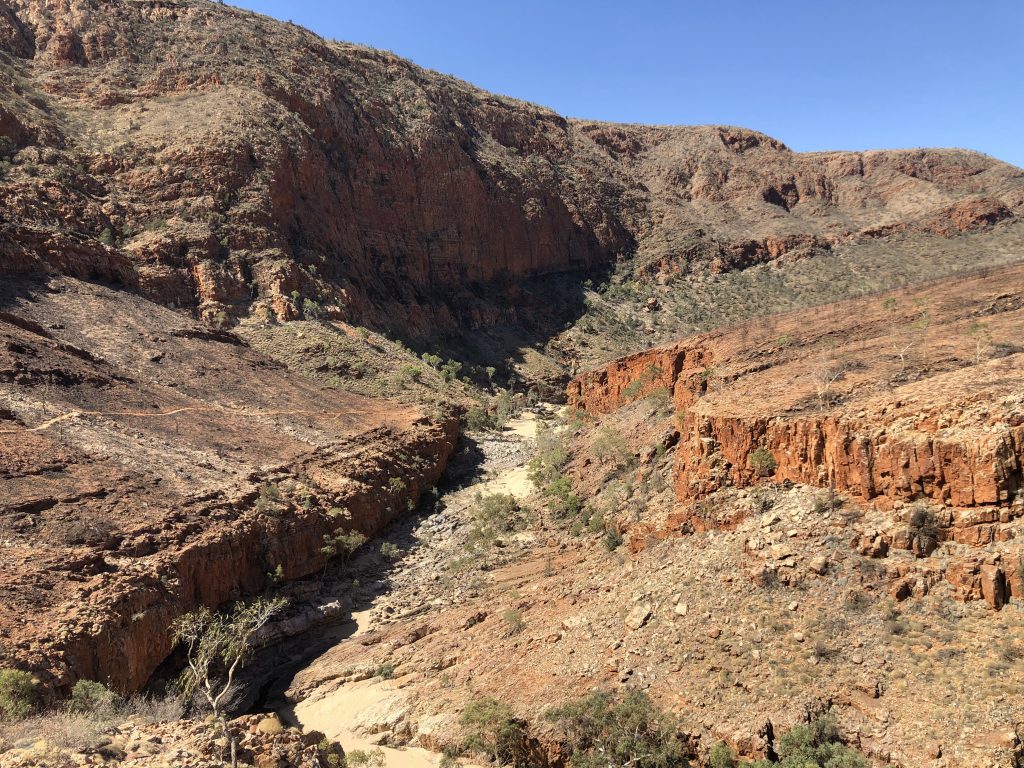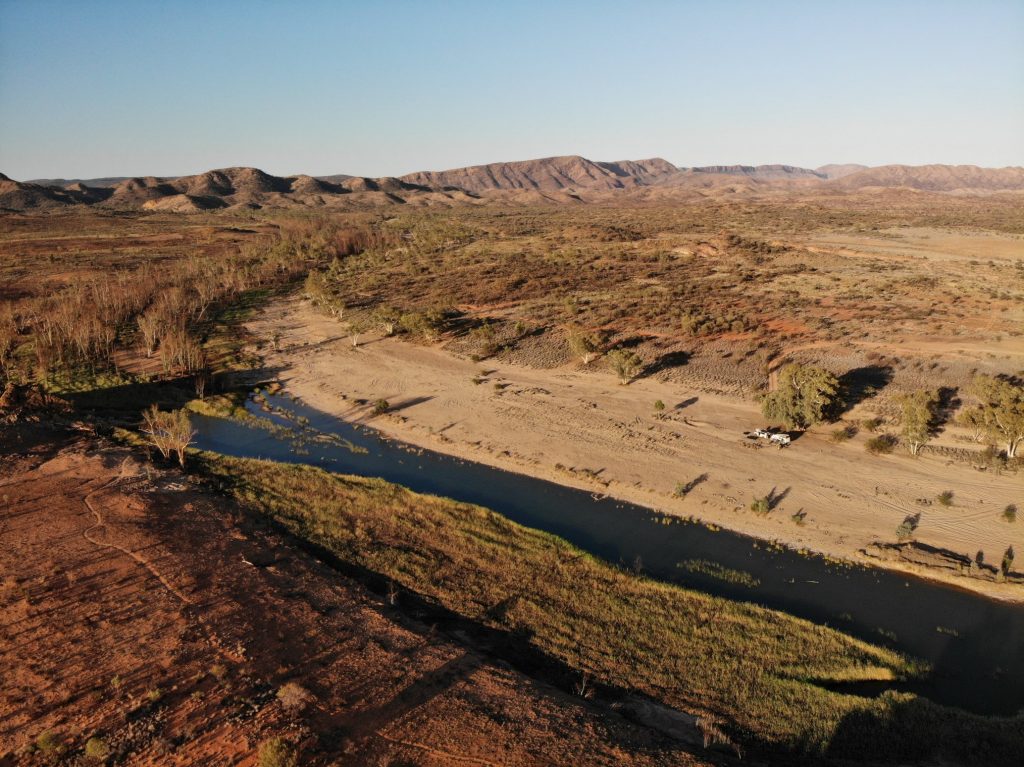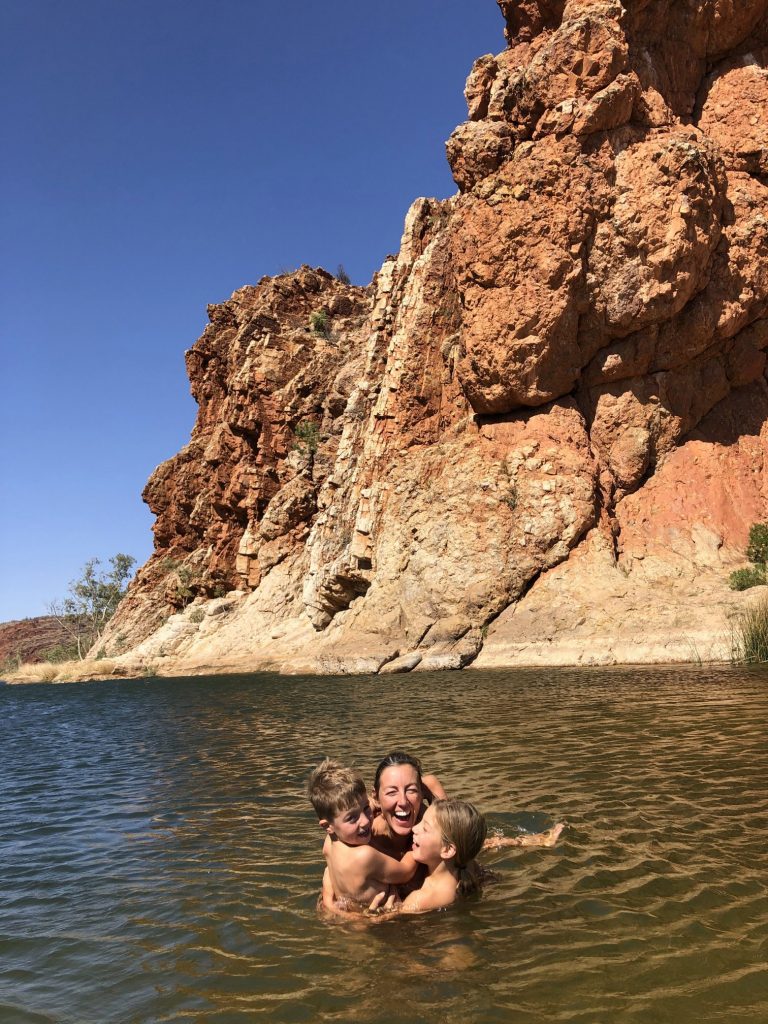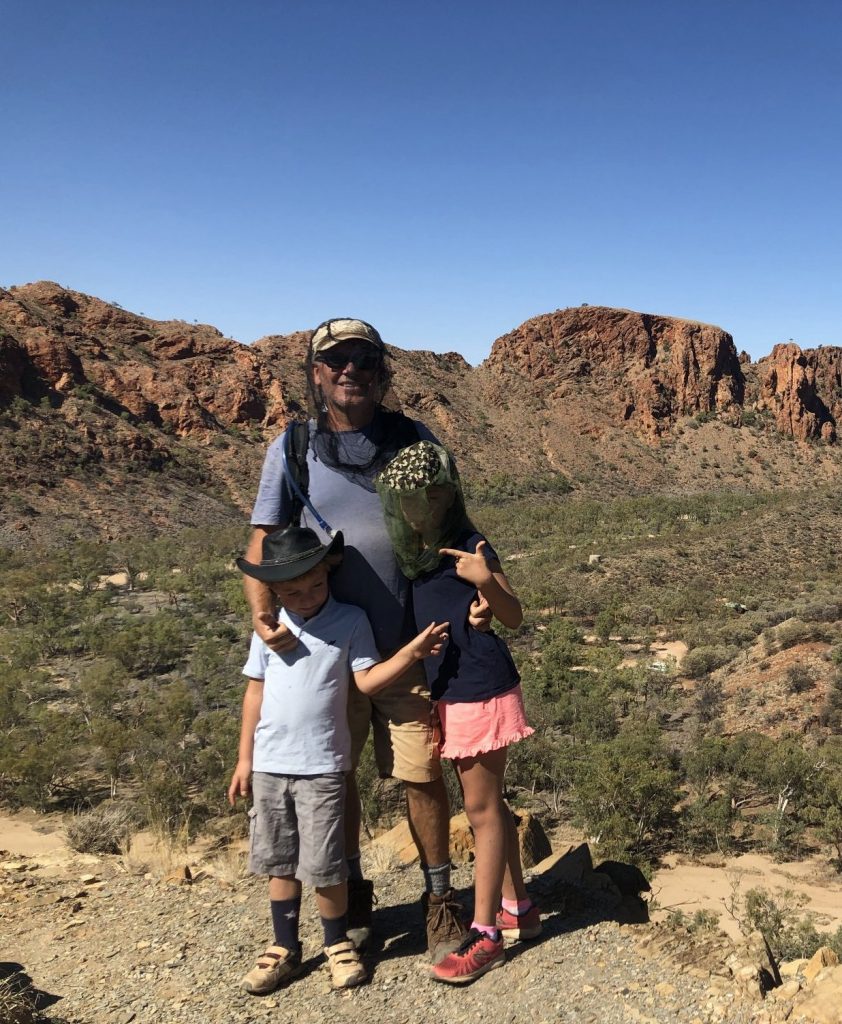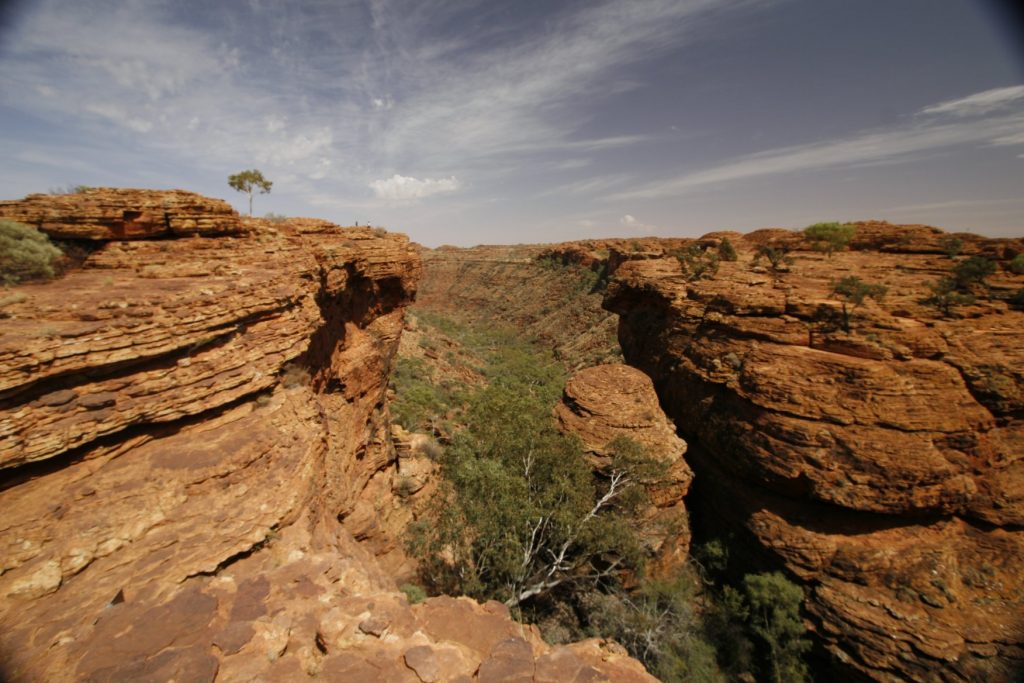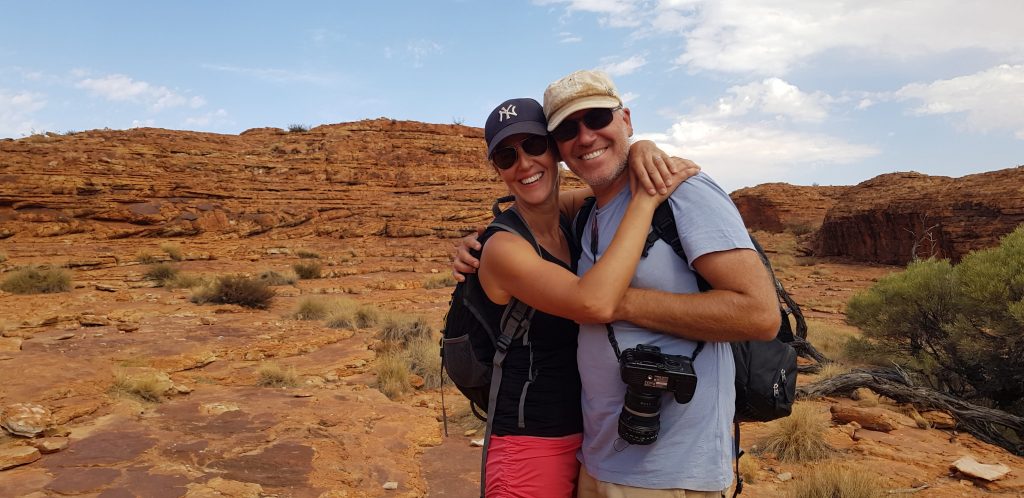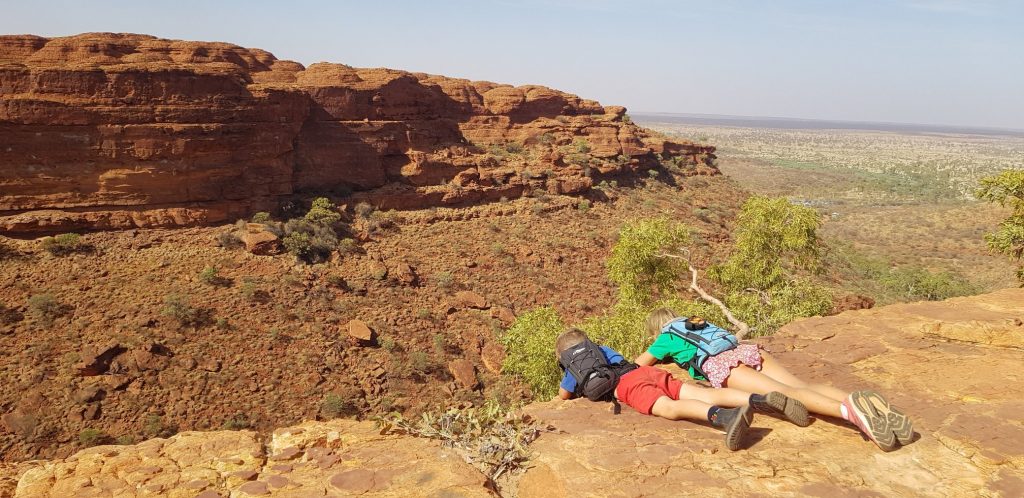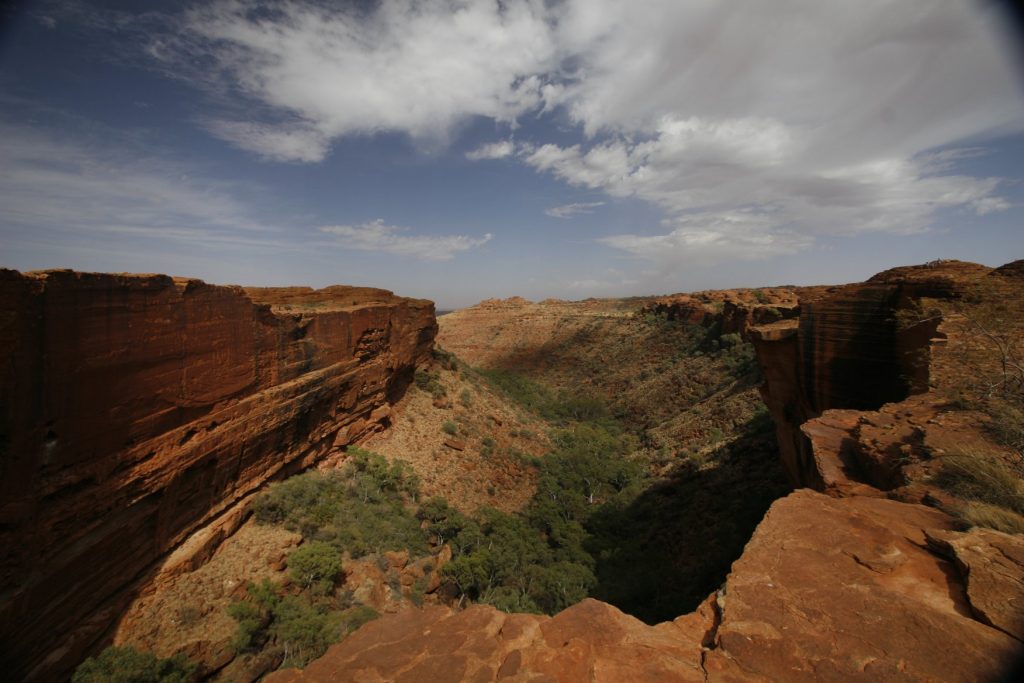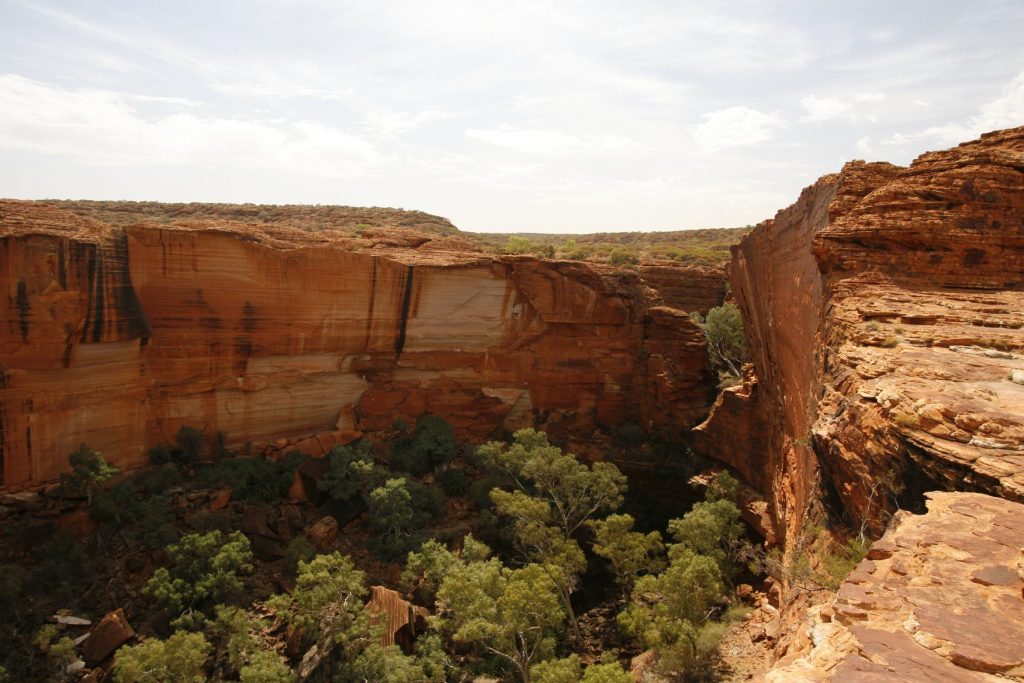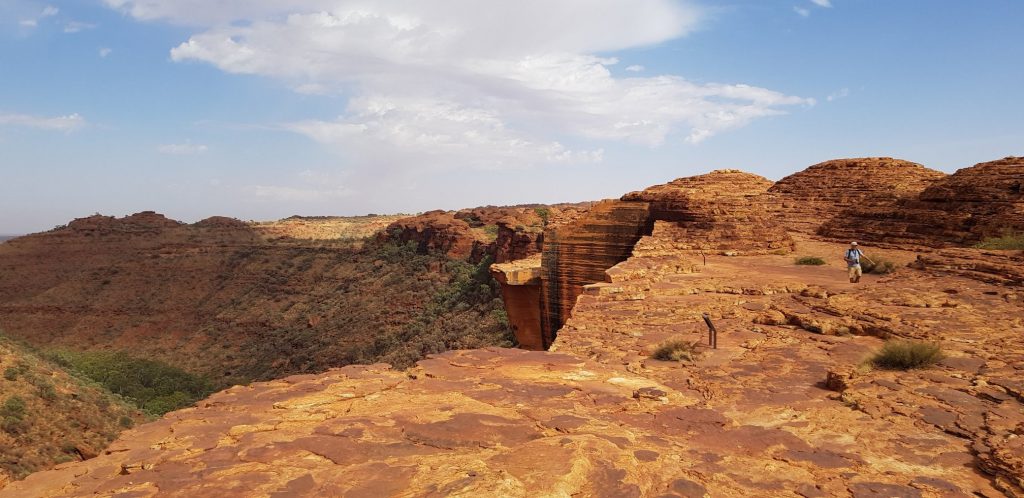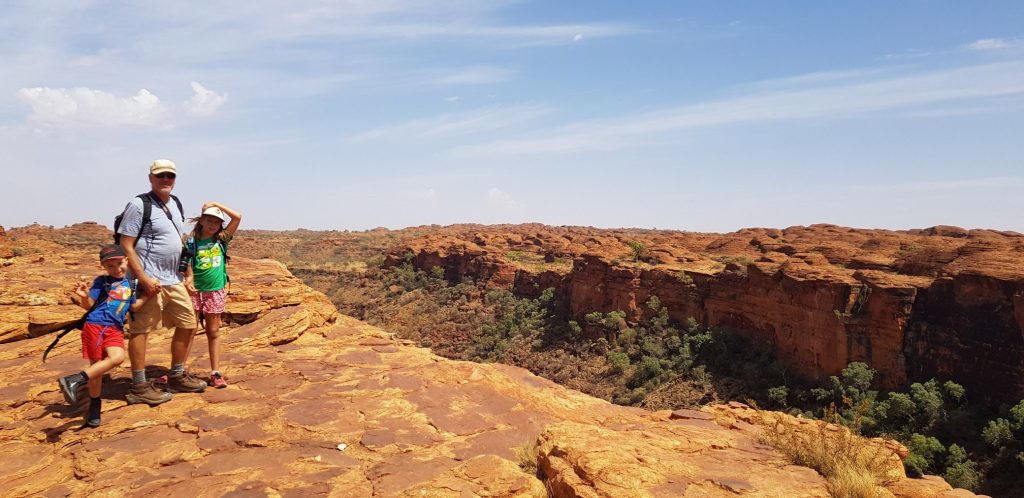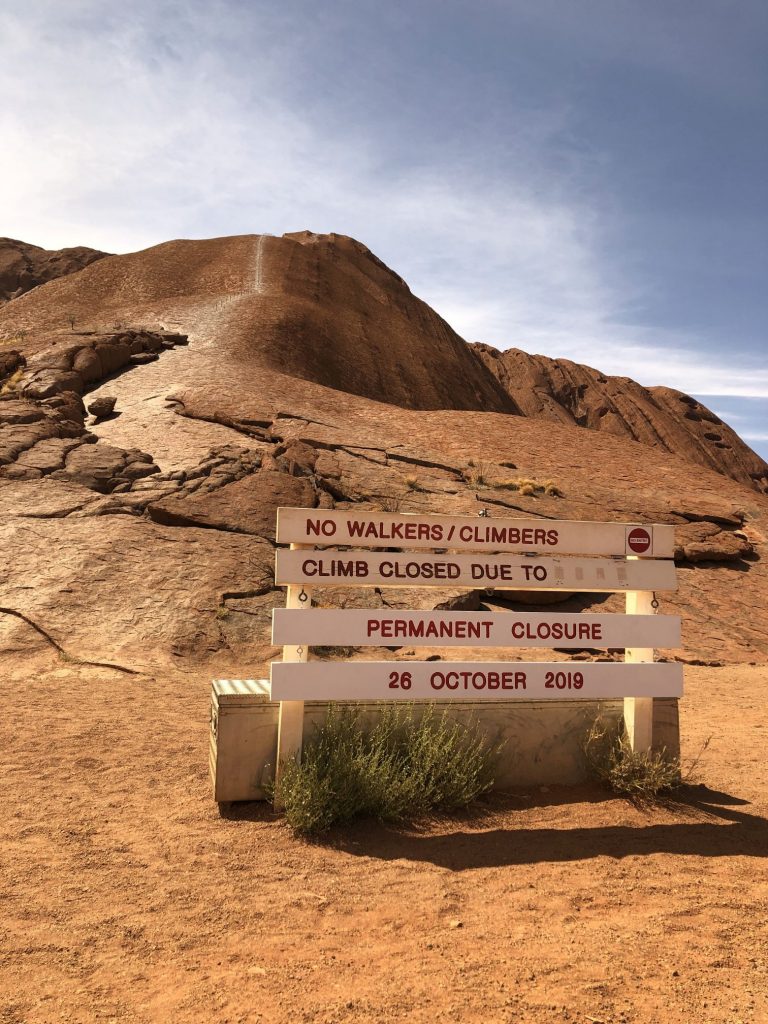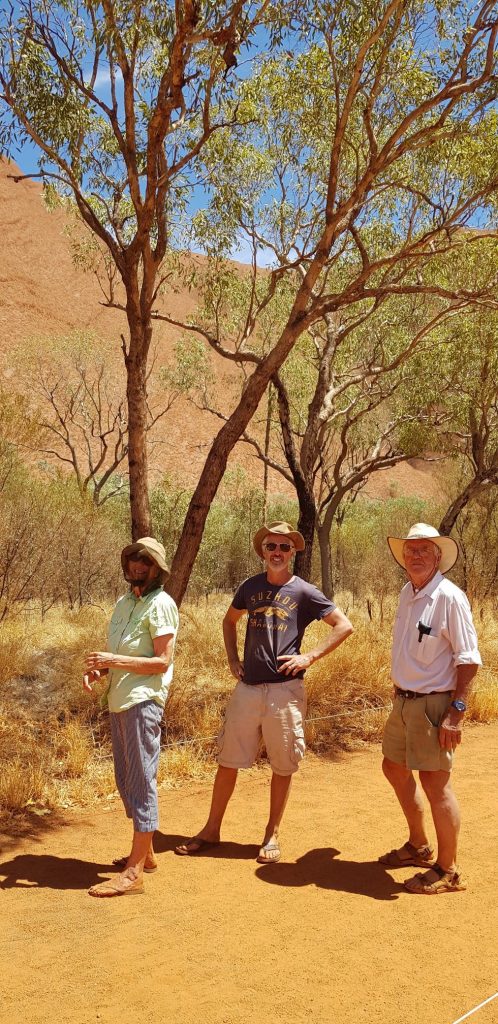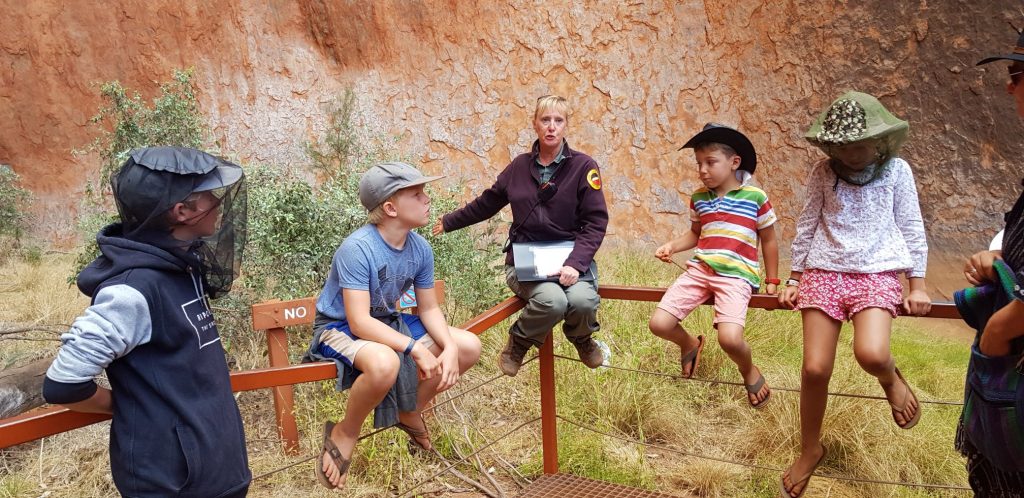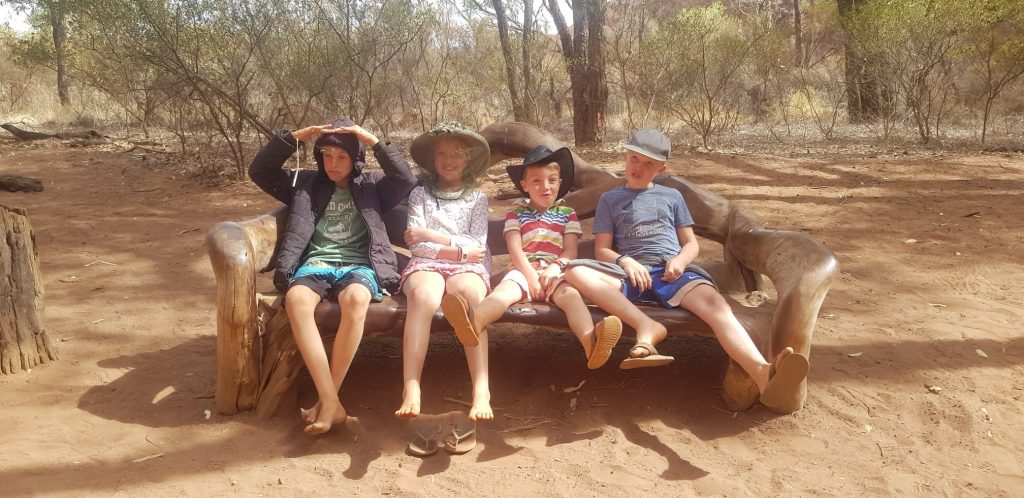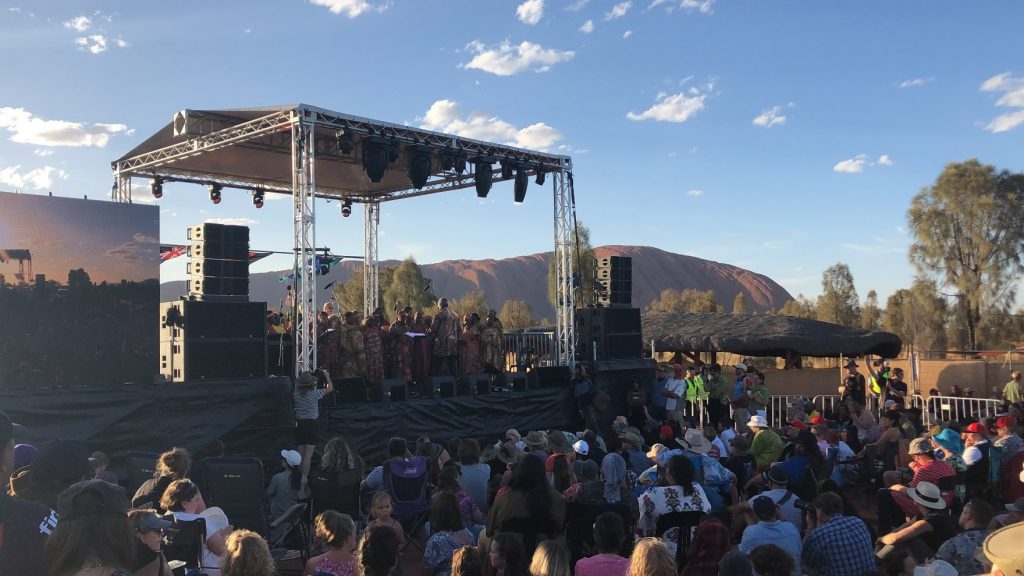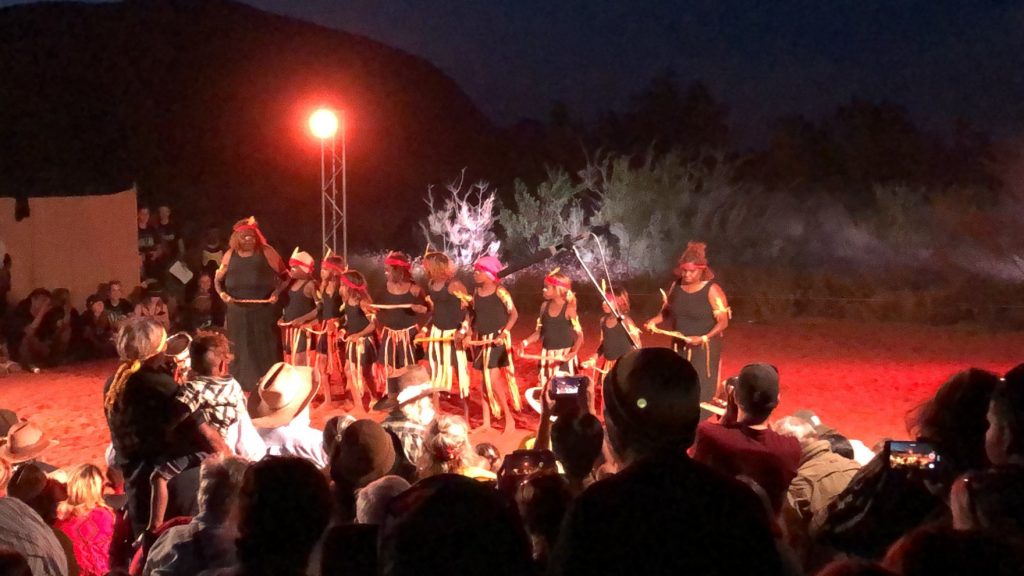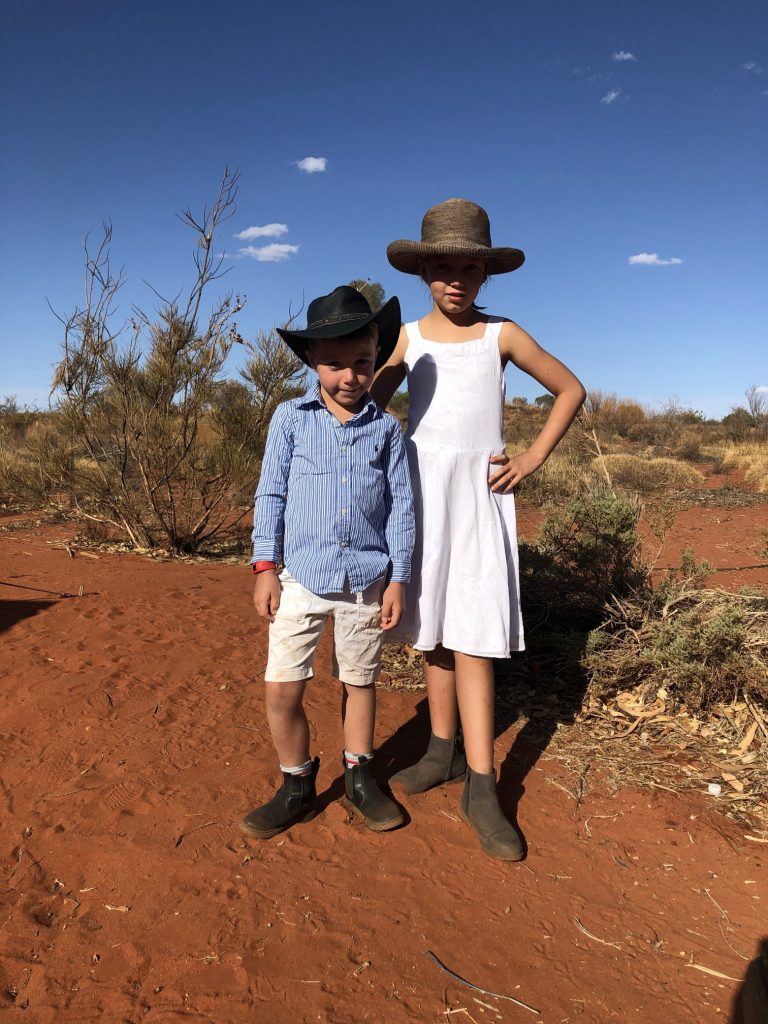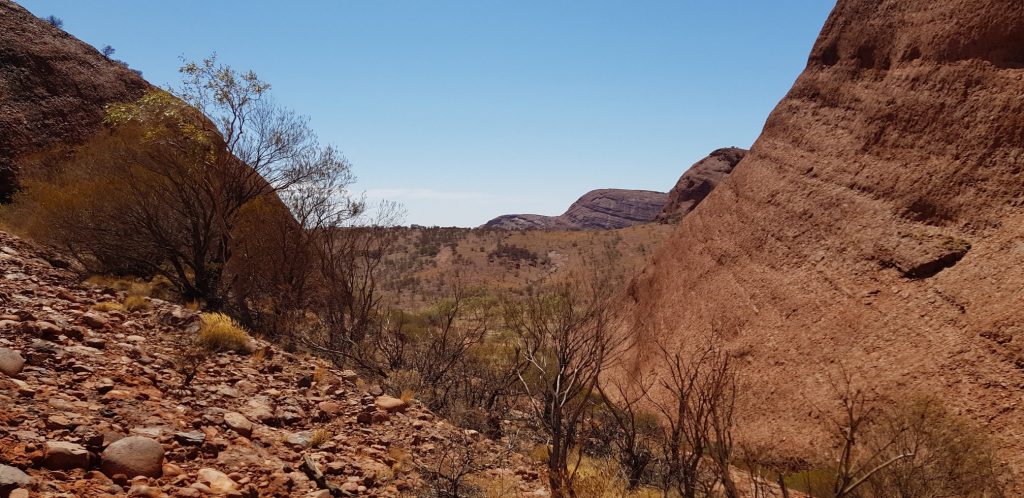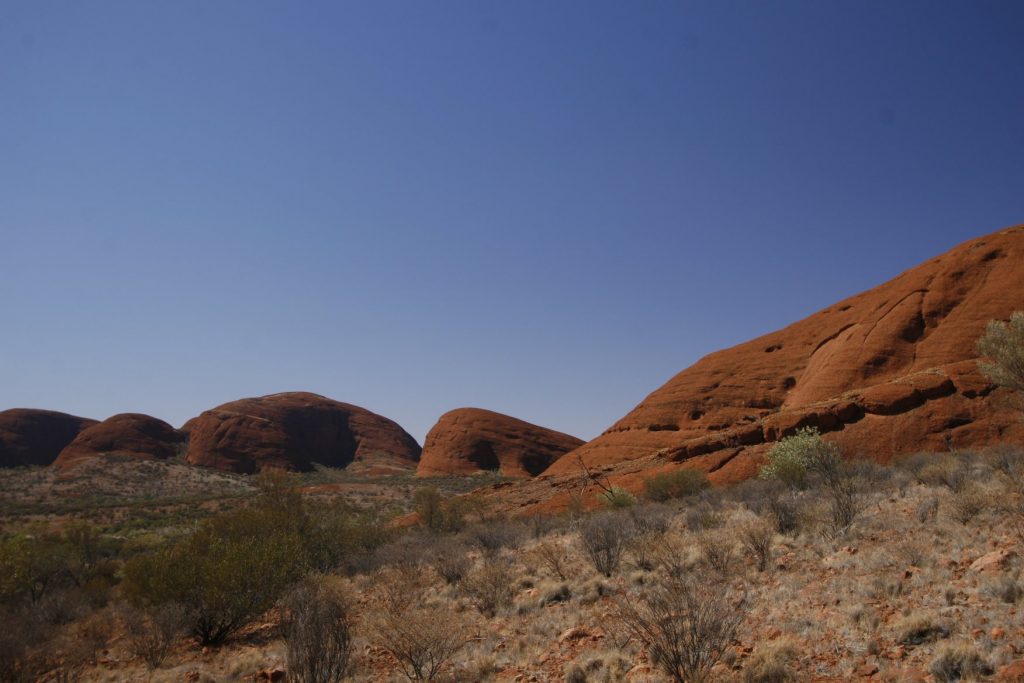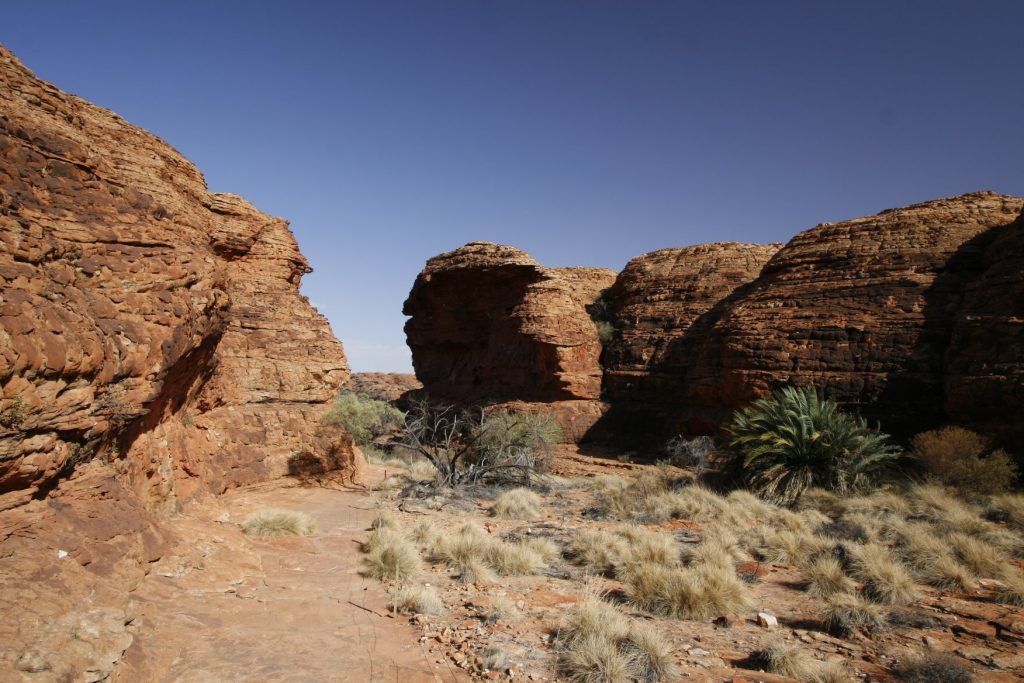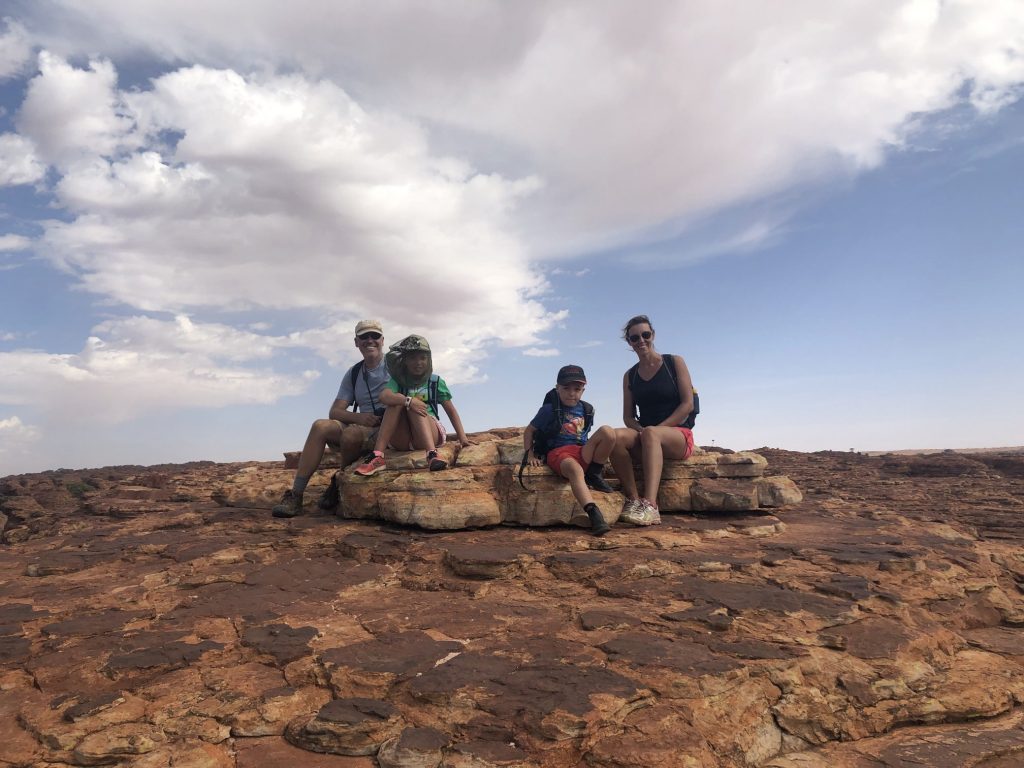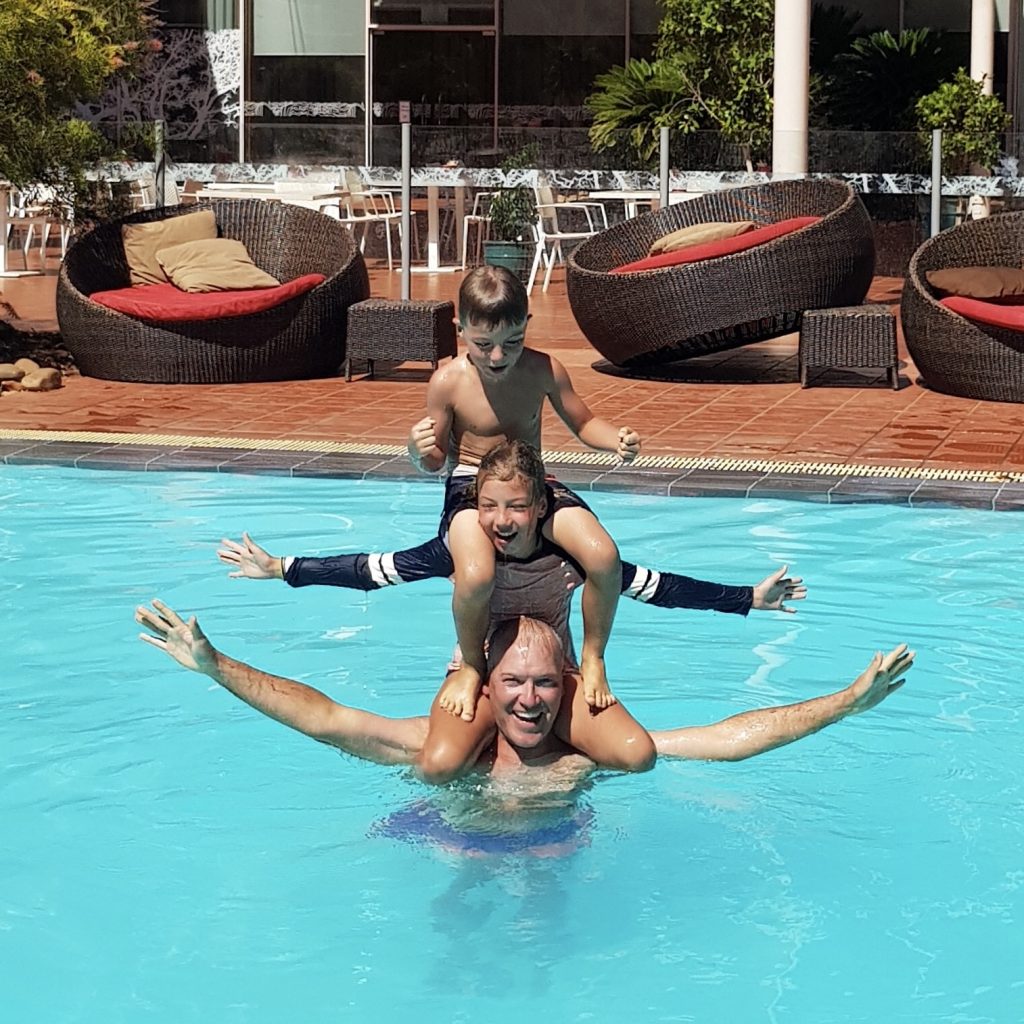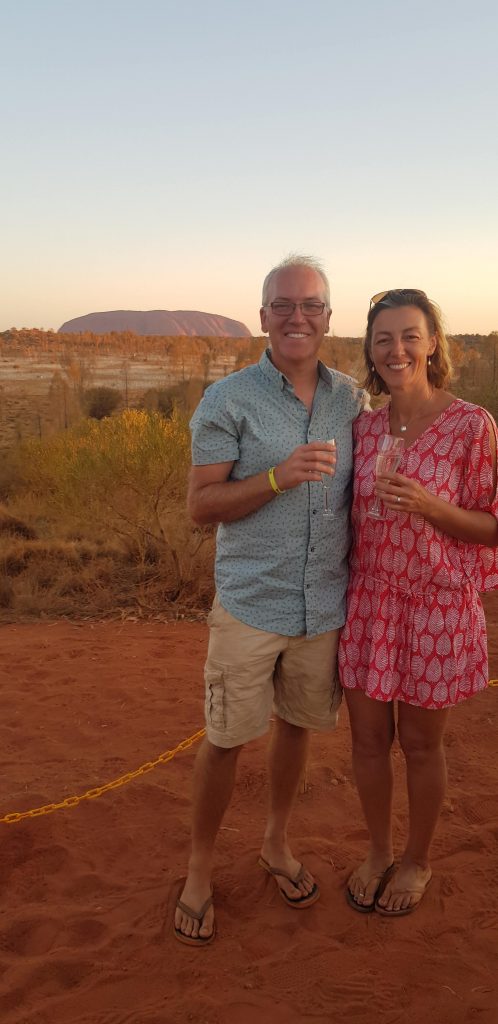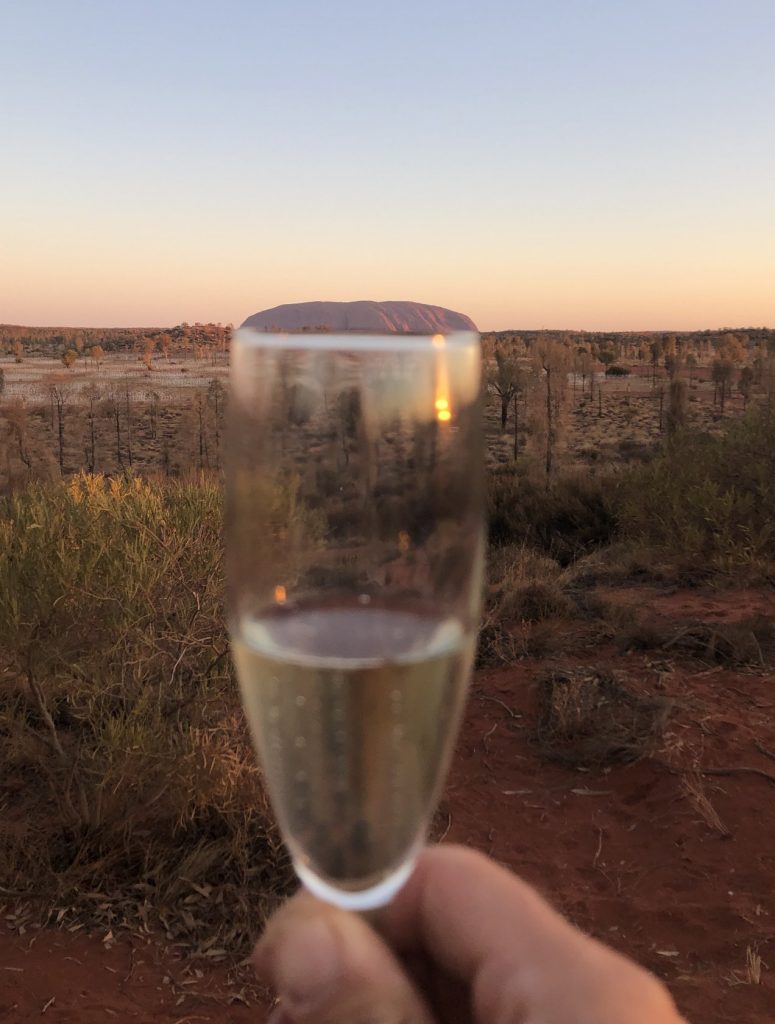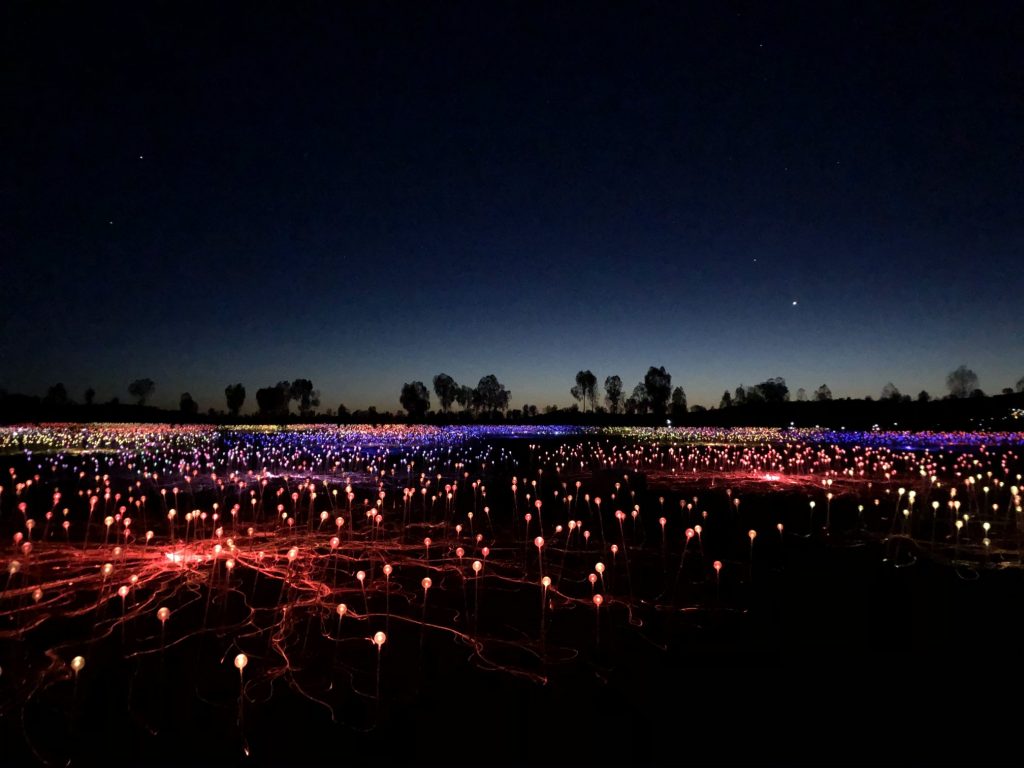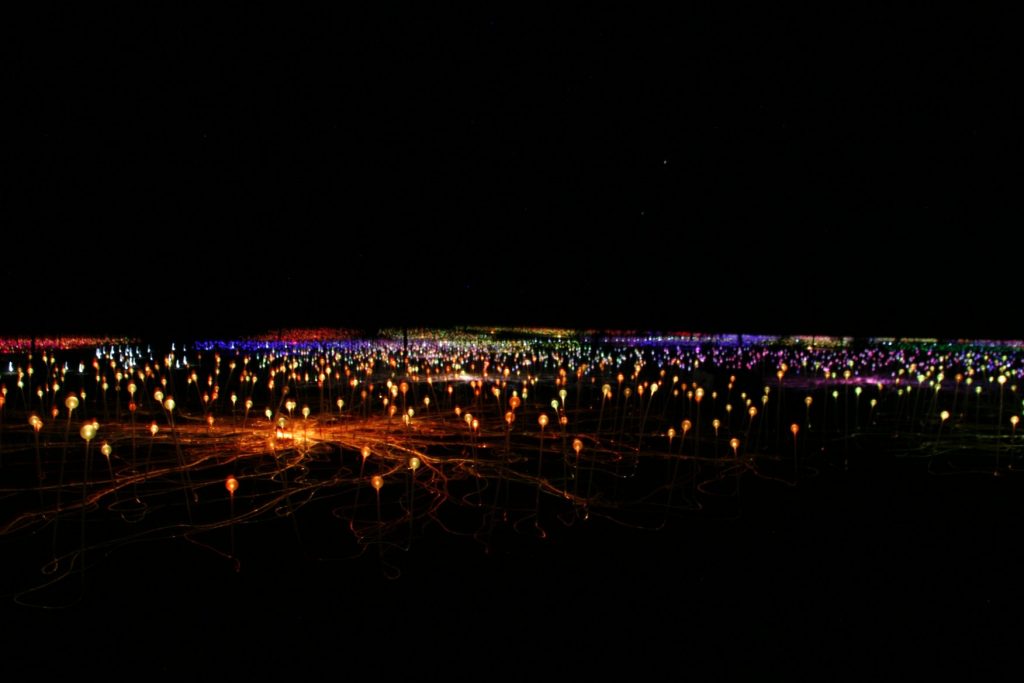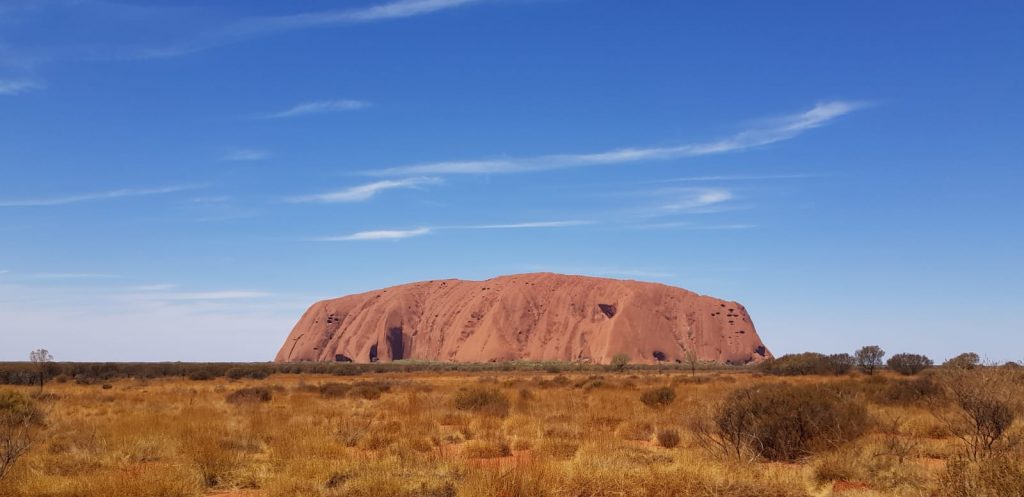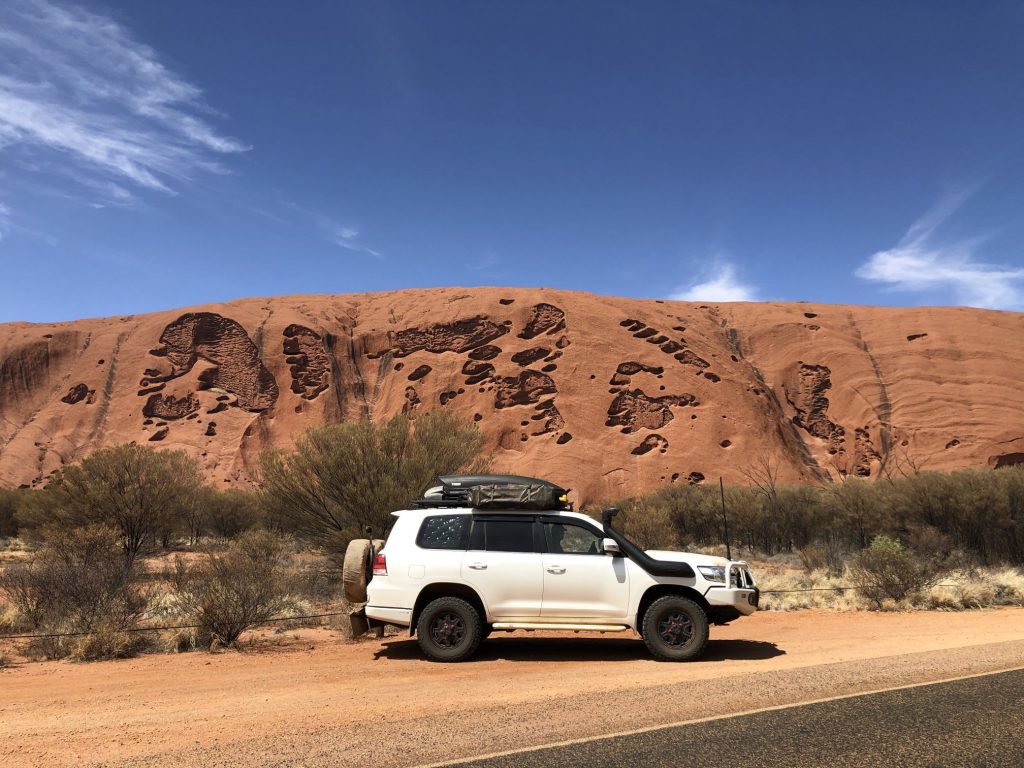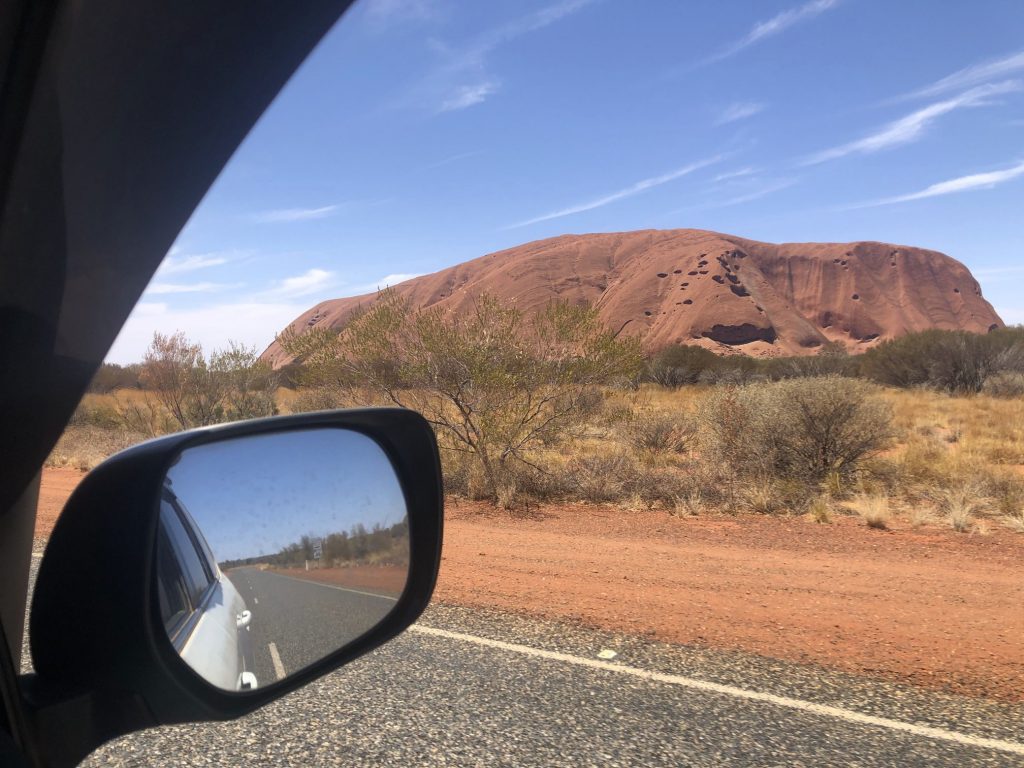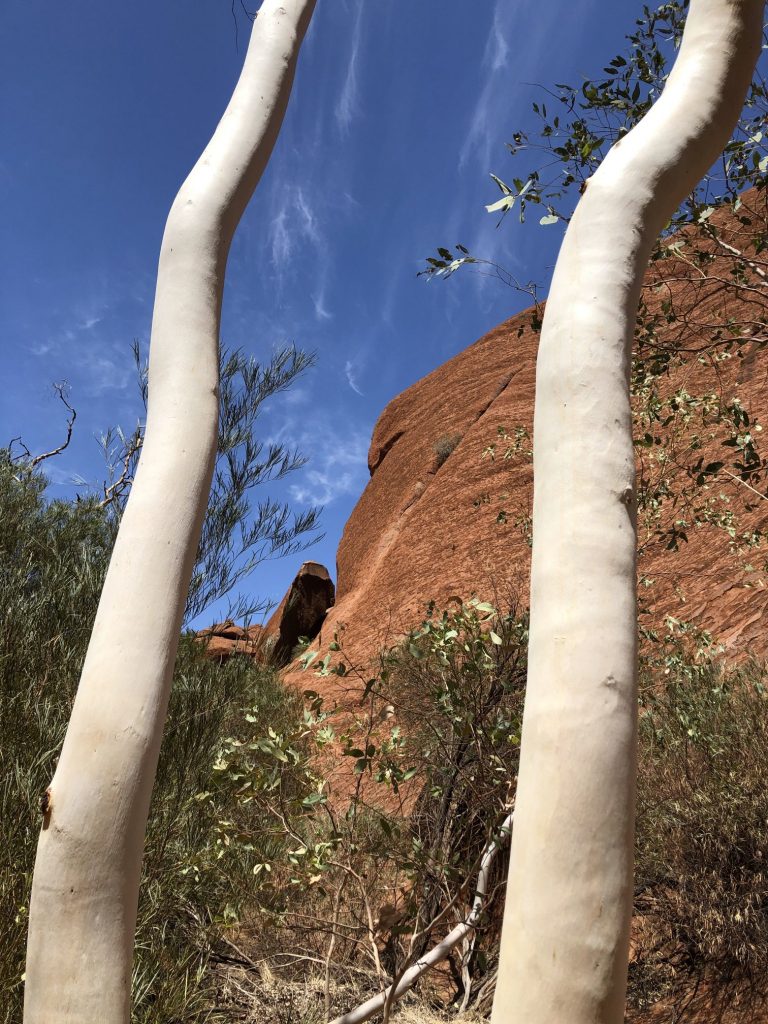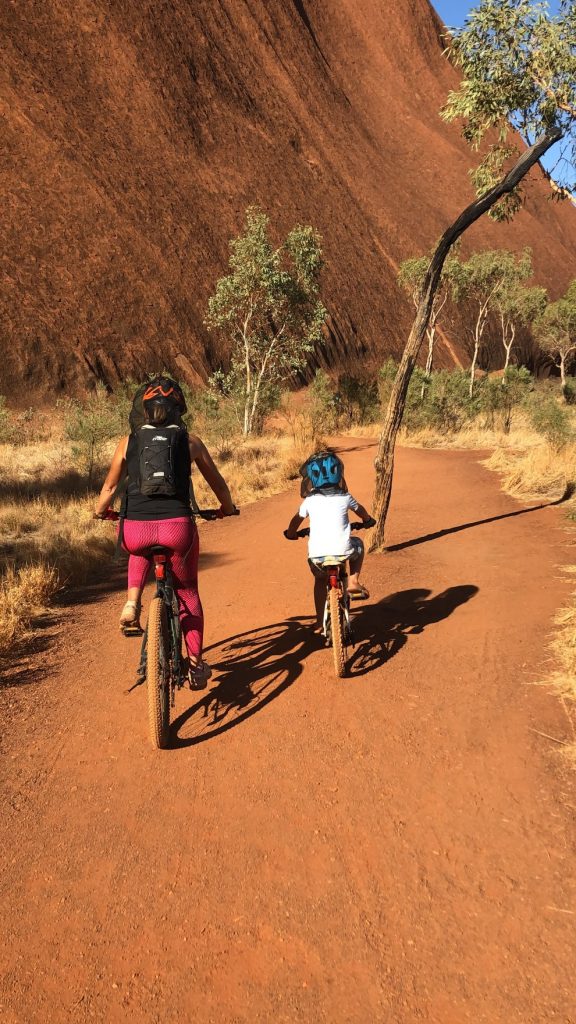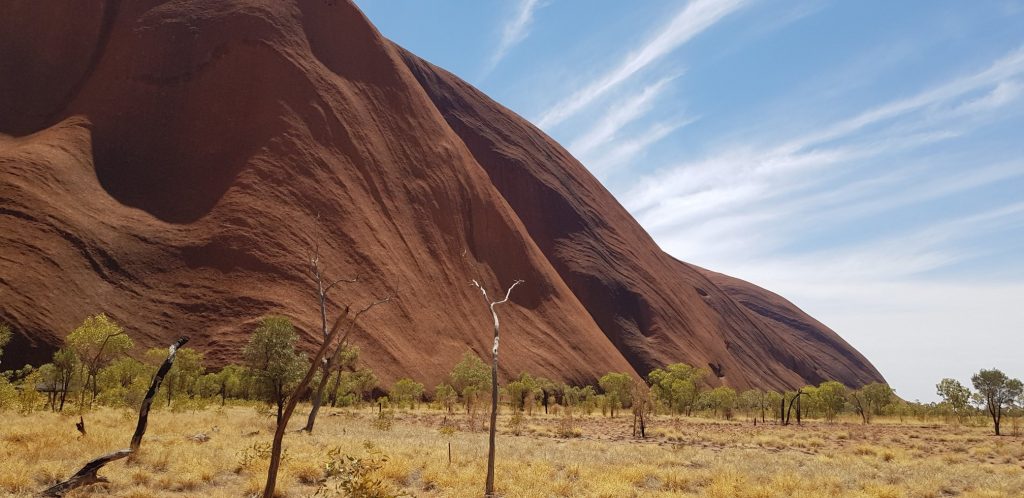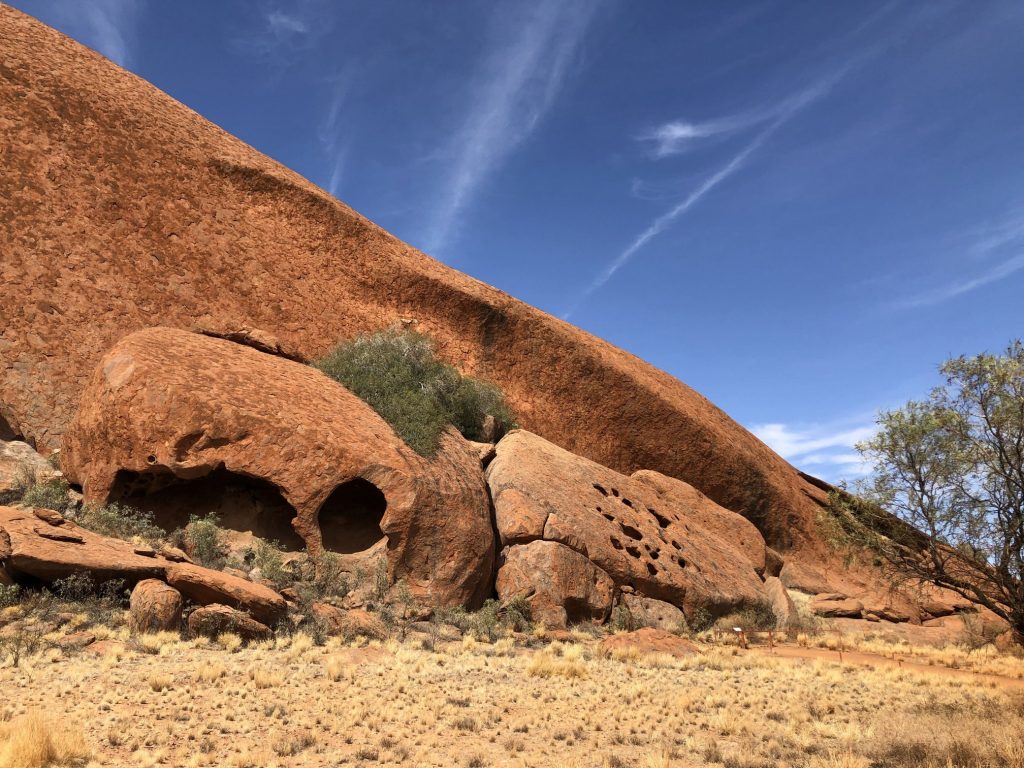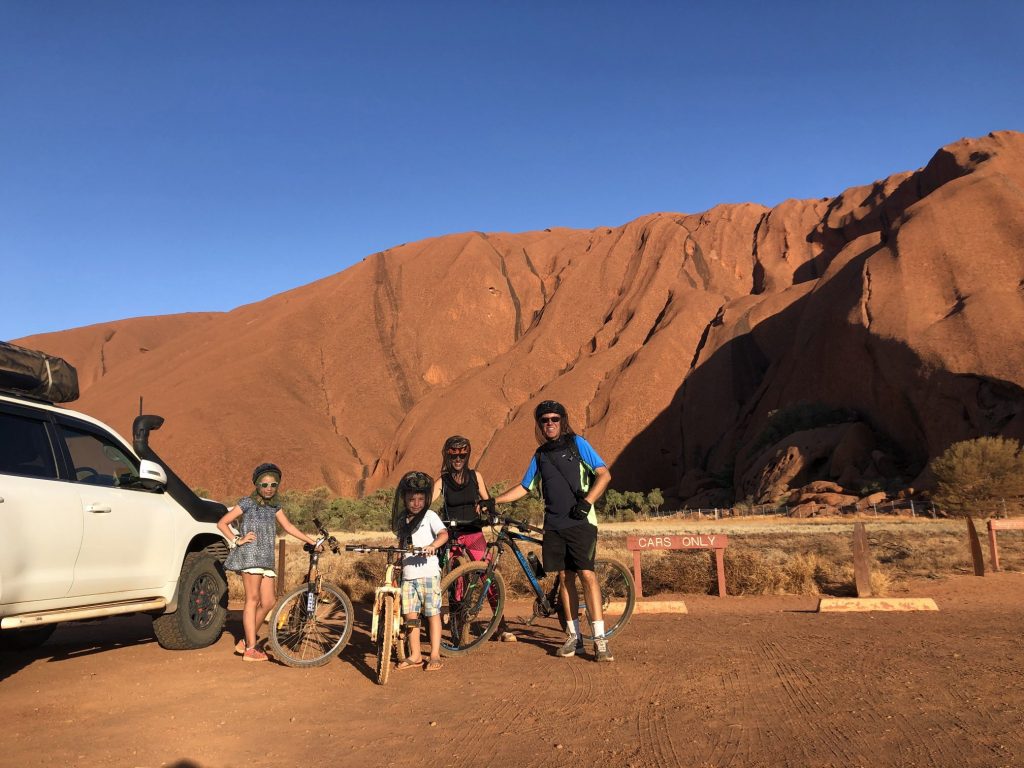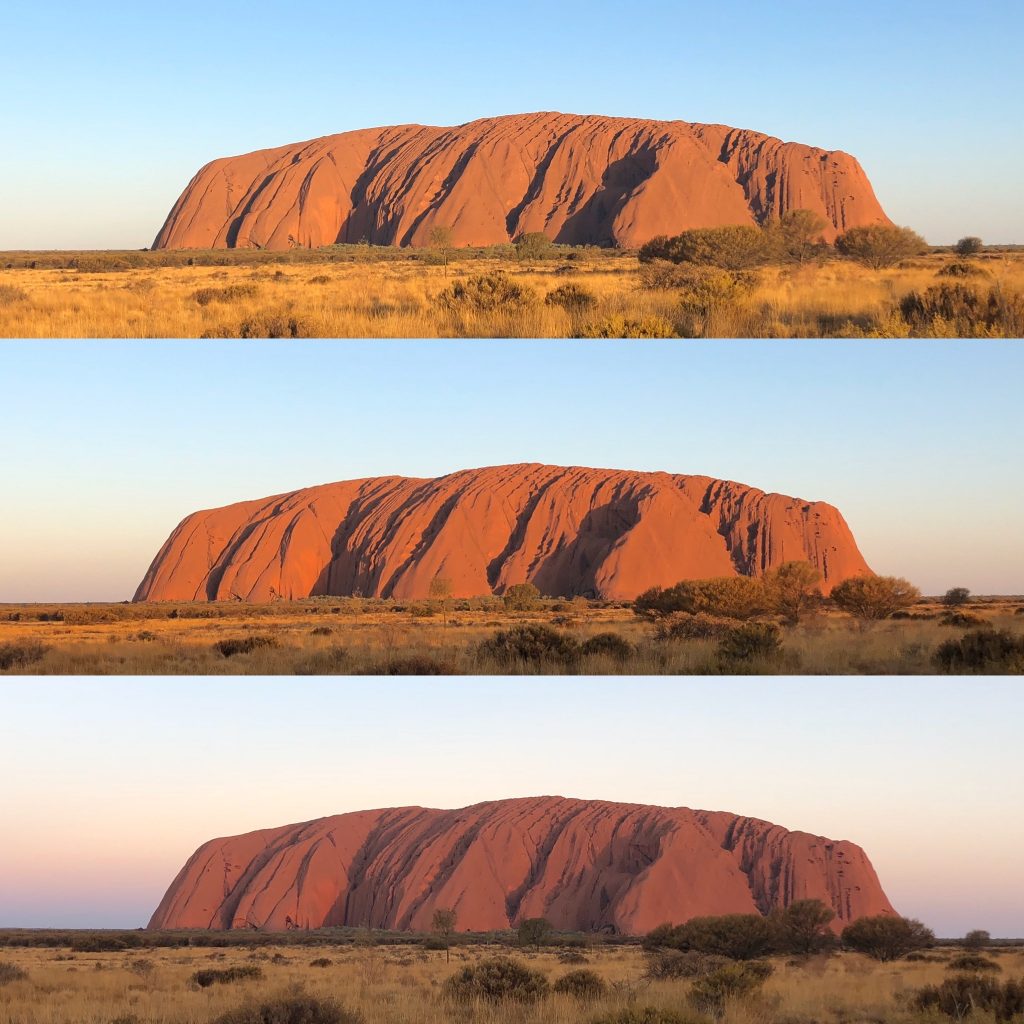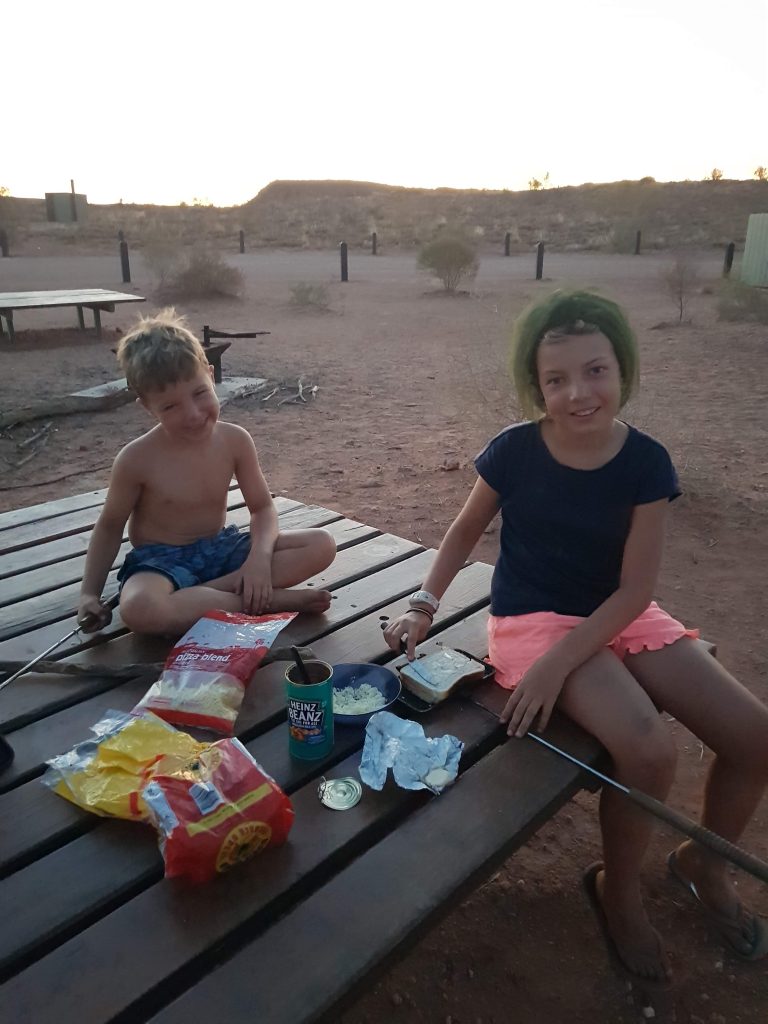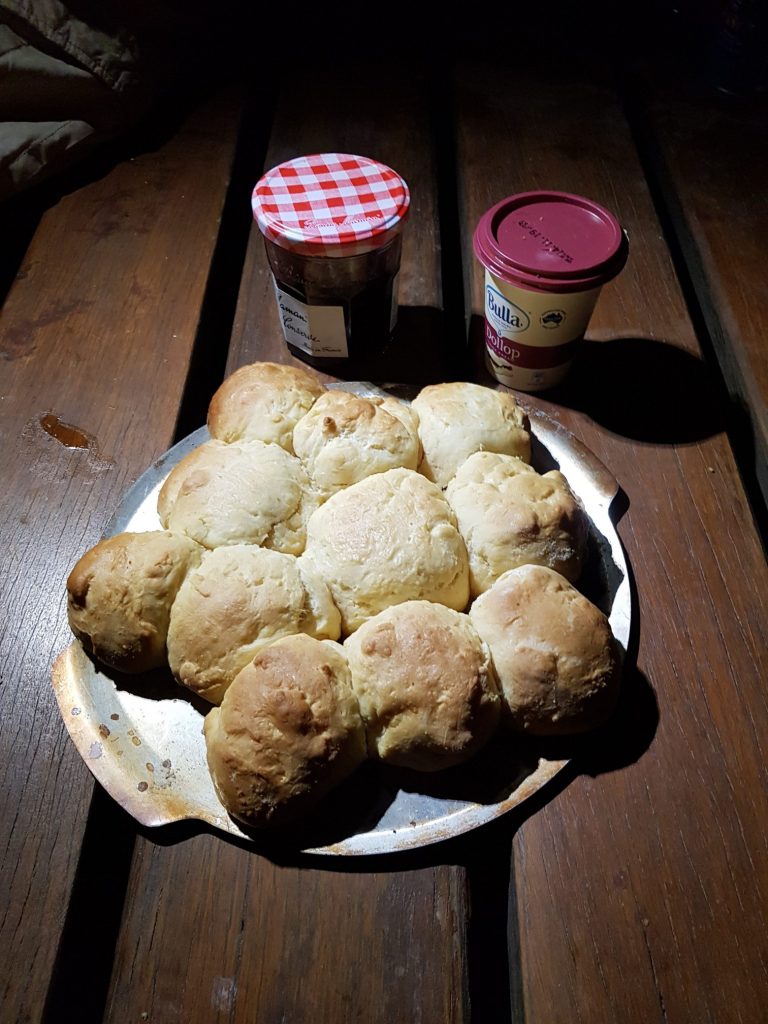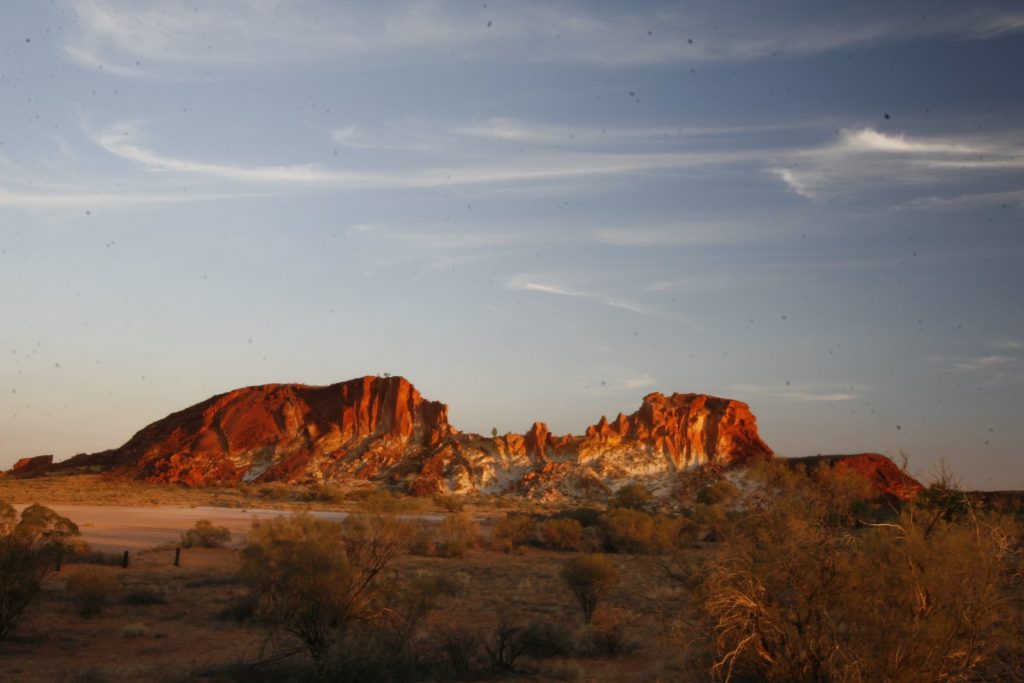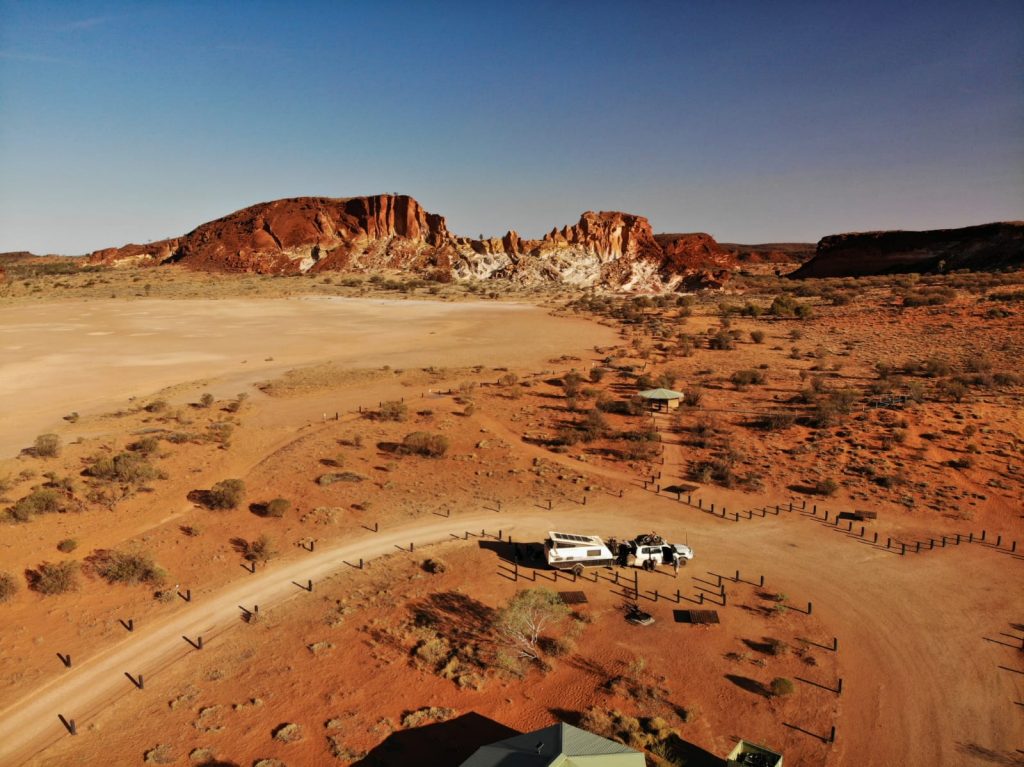Camp by the side of a pub with easy access to their swimming pool sounded like a mighty fine plan initially, that was until the outside music was still blaring past 9pm. Between the tunes bouncing into our van and the warm night air there was no hope of sleep in the kids. Alex had snuck off for a bit of ‘me’ time to watch the rugby, so after a quick call to see if I could bring the kids into the bar and warn him his peace and quiet was over, we were up at the screen watching Japan make history as they beat the Scots for a place in the quarter finals of the World Cup. The following night all was quiet, so I was hopeful that the noise was a week-end element, but it was just false hope, as on Tuesday the sounds of the 80s blasted out like I was back in my teenage years!
Alice is a popular gateway for exploring the Red Centre, the main reason we were here, yet I had no idea there was so much to do in and around town. Our first stop was the Royal Flying Doctors Service (RFDS). Quite an incredible start. It all began with an inspirational letter to Reverend John Flynn, written by Lieutenant Clifford Peel, a Victorian medical student with an interest in aviation, sparking the idea of using aviation to bring medical help to the Outback. Sadly Peel was shot down in France and never knew his letter formed the blueprint for the creation of RFDS. It was a Kimberley Stockman Jimmy Darcy, who sustained massive internal injuries in 1917 when his horse fell into a cattle stampede that proved the impetus for the Reverend’s vision for an outback aeromedical service, after the story attracted national headlines.
It’s a small museum yet jam-packed with interesting information. We started with a tour guide giving us a review on how the RFDS works today, then on to a pioneering holographic show as Flynn tells the story of his vision and its realisation into the RFDS of today. It’s very well put together. We moved into the museum with all the relics to gain a visual understanding of the history we’d just seen on the screen and listened to 2 more holographs of Nurse Kathy and Alf Traeger, a radio engineer, telling their stories of life back in the day. It was then time to enter virtual reality and we got to relive a true experience of a patient being airlifted from his cattle station to Adelaide through the nurse and pilot’s view. The nurse defibrillated the patient’s heart 50 times through the 3-hour flight!!
I think the kids most enjoyed stepping inside the replica RFDS aircraft, obviously mum had to be patient as I was jabbed and poked to make sure I was still fighting fit 😊 It really is an incredible service, a non-profit organisation who help those who are otherwise completely out of reach from the modern day services we all take for granted. A few fun facts shared with us; they operate as a 24/7 GP service, cover 700 million hectares, transport patients from the Western Australia to East when patients are required for specialised operations, have 61 fully equipped planes and fly 34 round trips to the moon annually!! Truly remarkable and certainly one of the highlights for me in Alice.
The Megafauna centre was next on the to-do list so we could learn a little about the subject, with many species unique to the region. A bumper haul of fossils were discovered just north of Alice springs in the 1950’s at Alcoota Station, providing a rich collection of jumbled bones, in turn puzzling scientists as to why they were so abundant in one area. The kids enjoyed the interactive displays, colouring in pictures and hunting for hidden fossils in sand.
The best thing about hanging out in van parks with others is the interesting people you meet. With many other families now on the travel circuit there is a high chance you’ll get to meet others with kids = kids make friends = parents get a little time off as kids are great at entertaining themselves, and other’s toys are always far more interesting than your own few. We met a lovely family who had similar age kids and they took themselves off whenever they were together. It was bliss 😊
Schooling one day consisted of a visit to the original telegraph station. This was the home to the first European settlement in Central Australia, whose sole purpose was manning the telegraph station. This formed an important repeater station enabling a telegram to be sent from London all the way to Adelaide via a continuous cable spanning half the world! Such a remarkable feat of engineering it must have been, transforming communications across the British Empire. Hard to digest now, given the immediate accessibility we all have.
We also took the kids to school, to show them the largest classroom in the world at School of the Air. The school has students living in an area covering 1,300,000 square kilometres, which equates to double the size of Texas or ten times the size of England – that’s one heck of a big classroom! We got to see a class in action and how the teacher uses technology to share knowledge and use materials with different cameras and chat screens. Kids still weren’t keen to join up!
The highlight for the kids was the visit to the reptile centre. A little place, with lots of snakes, lizards and a huge resident salt water crocodile. We turned up at feeding time, the snakes get a mouse about 3 times a week in summer, once in winter. The kids found it fascinating to watch. We managed to kill about an hour as the kids ran from display to display looking at all the different species, where they could be found in the country and which would kill you (like most things in Aus!). The best bit was the talk on reptiles and getting to hold them. Initially not keen, the kids were quite reluctant to hold a Bearded Dragon and Blue Tongued Lizard, FOMO got the better of Lexi after Alex and I had a go, Reo was not interested in the slightest to begin with. The most important part of the talk was what to do if you come face to face with a snake.
In case you’re interested, and this is for Aussie snakes;
1) Stop dead still – they have poor eyesight that mainly detects movement
2) Call for help as loudly as you can – snakes don’t have ears so can’t hear you
3) Let the snake move on (even if its crawling over your foot!) – they have very poor memory and will quickly forget why they were startled
4) Move slowly away from the snake – ONLY once they have moved a couple of meters away
After that, we put it to the test as they brought out the most venomous snake they had on display, examining us to see if we’d taken the talk onboard … OK, it was only an Olive Python 😉 We did take it all on board though, and for all the walks we’ve done since, we’ve practised what to do when we’ve been out, talked through the process thoroughly and occasionally done a surprise drill to see if the kids remember to stay completely still. We’ve only seen 3 snakes since we’ve been away, all before the talk and with the dry conditions we’ve been having, we’re not expecting to see many more as they’ll be hiding, but better to be safe than sorry.
Our time in Alice had gone quickly with the excursions, school work and playing with new friends. It was time to explore further afield. There’s an awful lot more to the Red Centre than the Big Rock it’s famous for, and one of those fantastic destinations well worth a visit are the MacDonnell Ranges. The East MacDonnell Ranges are not as well-known as the West MacDonnell Ranges, and still a little bit of a secret I think, so that was our starting point. In normal style, we didn’t leave town until afternoon, and the sun was just setting as we arrived at Gem Tree! The following morning, we tried our hand at fossicking. As we were out of season, the daily guided tours weren’t running (should have been there yesterday or the following day!), so we settled in with a bucket of garnet bearing gravel to see what fortunes we could find. Red Garnets are the name of the game here and we found heaps of tiny fragments and two of suitable size and quality to each make a 3mm gem 😉 It was fun, yet I was secretly glad we’d missed the driving tour (6 hours in total), 30-60minutes was enough to fulfil my fossicking desires.
The East MacDonald Ranges, or the ‘East Macs’ as the locals call it are beautiful. We had a few amazing camp spots, my favourite being Ruby Gap. Ruby Gap was the site of a ‘ruby rush’ at the beginning of the 20th century. The ‘rubies’ turned out to be those semi-precious garnets we’d just been hunting for and the miners soon left for Arltunga and caught gold fever (that was a visit for tomorrow). We took a rugged 4WD track as far as we felt we should go and bunkered down for the night on the edge of the wide Hale River bank, the only people for miles. The scenery and remoteness both a win, and we continued to search the sandy river bed for the flicker of crimson from any garnets that may still be lying around. Bliss.
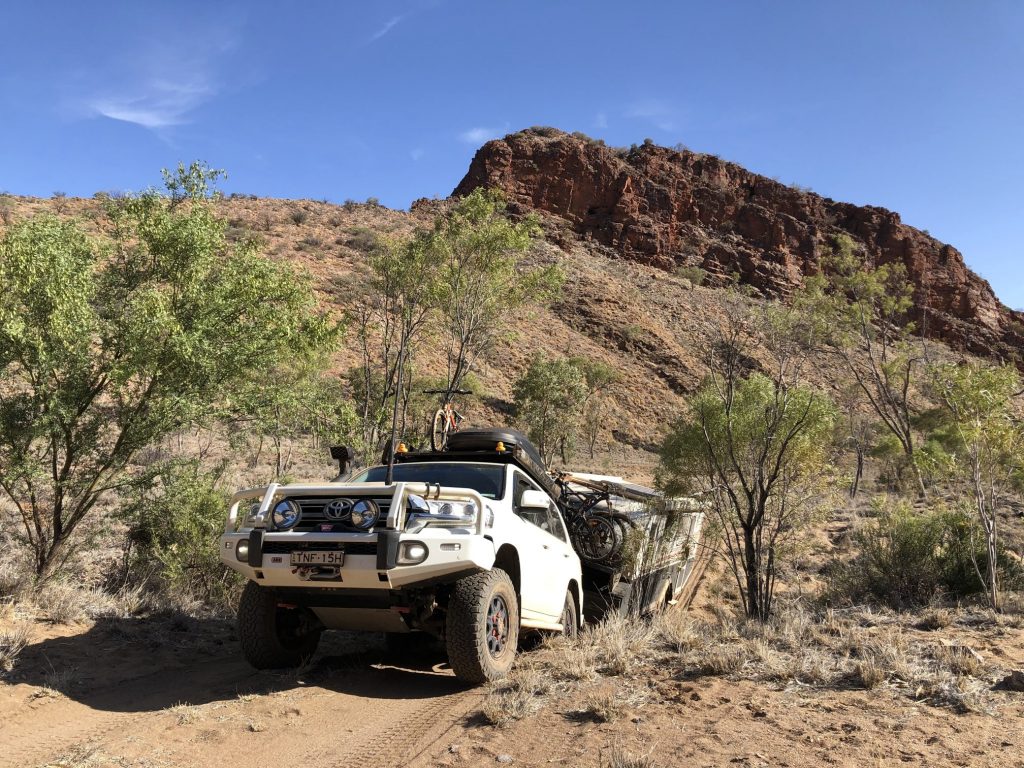
Alrtunga is the site of central Australia’s first gold rush and is now a large historical reserve. It was worth the detour in. Arltunga is surprisingly dry, it gets VERY cold in the winter time and was VERY hot when we were there, you really have to marvel at the toughness of the miner who came out to this bleak and desolate place, hoping to strike gold. There’s a fabulous visitor’s centre, with some hands-on displays of old mining equipment and an insight into the harsh reality for those who came here looking for gold. Miners would walk a couple of hundred KMs from Alice Springs pushing their worldly possessions in a wheelbarrow!
Trephina Gorge was our last stop in the East Macs. We’ve now done many a gorge since leaving Sydney, and this was as beautiful and different in its own right, as all the others we’d seen. Russet strata, blue mallee and sandy creek beds bring the colours of the desert into vivid detail. As the sun lowered towards the horizon, it was cool enough to take a stroll. We were surrounded by sheer red and purple quartzite rock faces and ghost gums looking as if they’ve been caught exposed, their bare white trunks glowing for all to see. Everything appeared to be sparkling under the low-lying sun. We walked up the side of the gorge, between the deceptively downy-looking spinifex underneath the blue sky. After a short steep rise to get the heart rate going, we meandered over the crest and followed the path down to the dry river bed. The following morning we explored the opposite side of the gorge before heading to the West Macs.
We followed the gorges along the Mereenie Loop, a much more adventurous and interesting way to explore the area than the bitumen highway. A lot of the main loop has been sealed now, but the paths off to the waterholes were worth the detours. Ellery Creek, a picturesque swimming hole was only a short walk from our first camp. The water was pretty cccold, so we opted for a paddle only and watched some dude do back flips and crazy diving off the highest section of gorge he could get to. We had a quick stop at the ochre pits, visually stunning with colours of yellow, red, orange, white, black and even purple to be found in the soil, but there is a lot of history here. Indigenous Australians have been using the ochre here for thousands of years for many different purposes including painting, ceremony and medicinal uses. I remember years ago going to an ochre pit, colouring our faces and clowning around, however the fun police have now been installed and it was a $5000 fine to even touch the ochre, so we tried to explain to the kids the fun that could be had back in the day!
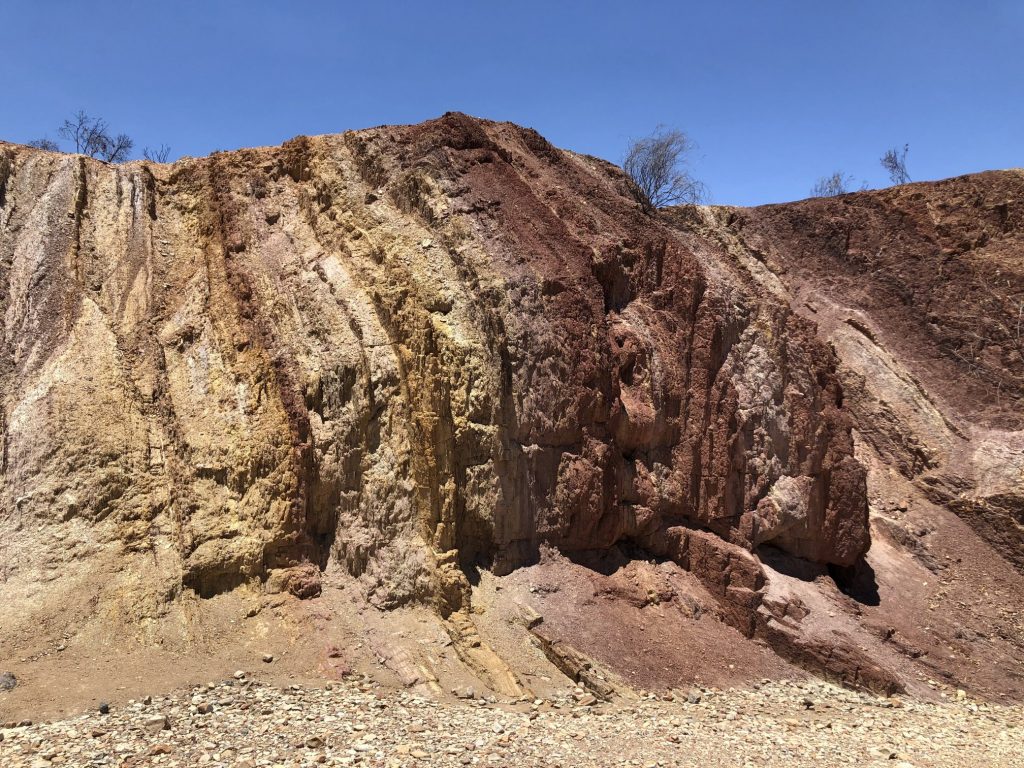
We ventured to one of the more popular walks in the area, and for good reason. Ormiston Gorge is a beautiful little waterhole with a walk to get you hot and sweaty before jumping in the waterhole to cool off. Since seeing a sign up in the Kimberley, (typically, at the end of all our gorge swims) saying there was a particular amoeba in the Kimberley water which could give you brain damage if you got the water in your ears, up your nose or swallowed it, we’ve decided to kept our heads firmly above the water. We’ve lived 2 months in ignorant bliss, ducking and diving throughout every water hole we could jump into, but hey, the little tykes could be hiding in here 😉 Our best free camp was south of here. We tucked ourselves in under a huge tree on the bank of the mighty Finke River, with water holes still full from when in flood and settled down to watch the sun set as we sat by the fire eating dinner.
A quick skinny dip and cheeky free croissant gifted by the manager at Glen Helen Gorge and it was back on the road again. Last stop was Gosse Bluff Crater. You can spot the Crater from various lookouts along the road, but it’s much better up close and personal. Once down the 10km of dirt access road, there’s is a short walk to get you up onto the rim of the crater for excellent views. This beautiful crater was formed roughly 142 million years ago when an asteroid roughly 600m wide crashed to Earth. Very different to Wolfe Creek, much, much, larger.
It was then on to my favourite rock of The Red Centre – Kings Canyon, which is considered more like the poor cousin of The Rocks by many. This scenic landscape of rugged ranges, ancient sandstone walls rising hundreds of metres to a plateau of rocky domes, rock holes and gorges in the Watarrka National Park is breathtaking. We were up at the crack of dawn to get there early to avoid the heat as the walk starts with a steep 100m plus climb. The walk itself is an easy 6km walk (who’d have thought I’d be saying that 10 months in!!) and within a couple of kilometres, the view down the sandstone chasm plunging 270 metres to the canyon floor definitely makes the initial steep section worthwhile.
It’s quite a fun walk with all the rock formations to scurry around, with a side walk we could venture down into the canyon to the exotic Garden of Eden, a permanent waterhole surrounded by lush cycads and plant life, indicating that this part of Australia once had a much more tropical climate. The next side walk we explored the unusual weathered rock formations that are called the Lost City carved out over time by water and wind erosion. The formations reminded us of the Bungle Bungles and it really is a shame that more people don’t make the extra journey away from Uluru and Kata Tjuta, as they really miss out on a treat.
Excitement was mounting as we’d arranged to meet The Perry’s again and the 300km plus drive around to Yulara was punctuated every 30 minutes of “how much longer do we have to go?”. It was a joyous reunion, with all 4 kids running around with the new x-shot guns Lexi & Reo had bought with their pocket money in Alice. The group had grown as Ben’s parents had been squeezed into the car as KC had flown back to Sydney.
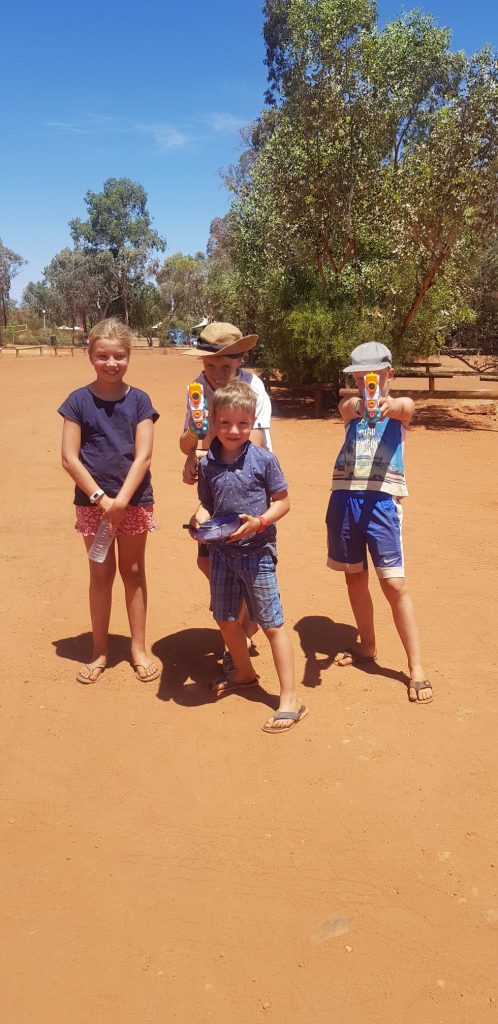
It was a historic day to arrive, the day Uluru climb was closed permanently. Our first activity was the Mala walk; a ranger guided walk round a section of the base explaining pertinent sections that are still traditionally used by the Anangu people, the geology and history of the rock. It was an extremely interesting tour. The rangers shared a lot of interesting facts; with how in 1966 the climb was installed without any consultation with the Anangu people, to the environmental pollution left by the people choosing to climb, from general rubbish to dirty nappies and human waste, which is all then washed off the rock in a heavy rain, having a hazardous effect on the wildlife. It was also interesting to hear that key performance indicators (KPIs) were put in place after Uluru and Kata Tjuta were handed back to the Anangu people on 26th Oct 1985, as the campaign began urging people to stop climbing. In order to permanently close the climb, one of the KPIs was a reduction in the number of climbers to only 20% of visitors and the Mala walk was another implemented in order to offer some alternatives to a climb.
The rangers were visibly upset when they talked about the people they’d had to carry off the rock, dead and alive, and with the surge of visitors in recent weeks in a mad rush to climb before the close (no joke, people from Japan did a FIFO in a day!!), it was a great relief to them the day had finally arrived. We went to the closing festival, the celebrations going well in to the night. There were traditional dances, choir singing, thoughtful and heartfelt speeches, touching on some of the atrocities from the past, as well as sharing some of the more ludicrous ideas, like one artist wanting to fly over Uluru and drop paint all over it to ‘improve the look’. It was poignant.
We woke early one morning for sunrise at Kata Tjuta. Kids were delighted to be woken so early for another sunrise. So excited in fact, that they stayed in the car while Alex and I enjoyed the changing colours of the rock. We continued to The Valley Of The Winds walk. Kata Tjuta means ‘many heads’, the 36 domes representing the heads of the elders. At 546m it’s 200m higher than Uluru, and vastly different from its sibling down the road.
It didn’t start well, maybe they didn’t like the dawn wake up, as both Reo and Lexi started moaning from the beginning. Fortunately, it didn’t take too long for Lexi to snap out of it, yet Reo continued with dragging feet. Before long, the ambience was destroyed as Reo began screaming the place down, Alex hardly containing his anger as a few bus load of tourists sauntered by! Certainly not your Brady bunch behaviour today. I on the other hand tried to walk along with the nonchalant “nothing to see here” look until Alex finally quietened him to a whimper. To be honest, it was quite an unpleasant experience, especially as they were now seasoned walkers and we’d had such fun on others.
When we got to the main lookout, we pretended we were half way round to try and cheer the kids up, along with plying them with a few sweets for luck. It seemed to do the trick, the second half was a lot more relaxed and happy, even though it was a challenging walk as we trudged over stones from the size of golf balls to basket balls. It’s certainly a ‘must do’ walk as you can’t come all this way and not do the trifecta, but I rank it 3rd out of the 3 rocks of the Red Centre. We did a walk a day and the afternoons were spent confidently walking into Sails (the rather salubrious hotel down the road from our camp pit) to enjoy the pool and loungers. Obviously, Alex and I would never have been so audacious to just walk into premises uninvited, Ben taught us all we knew on that technique!
That night Alex had our 1st date night of the trip. Woohoo! Ben and his parents kindly offered to take the kids to an astrology night so Alex and I could go and see the Sound of Silence. The exhibition, aptly named Tili Wiru Tjuta Nyakutjaku or ‘looking at lots of beautiful lights’ in local Pitjantjatjara, is the work of acclaimed British artist Bruce Munro. Overwhelming in size, covering more than 7 football fields, you become immersed in a fantasy garden of 50,000 spindles of light, the stems breathing and swaying through a sympathetic desert spectrum of ochre, deep violet, blue and gentle white.
The night started with champagne and canapes as we admired Uluru from afar watching the changing colours of the landscape as the sun sank below the horizon. Once dark enough, and a few glasses of bubbles down, we took a romantic stroll down to the display, along with the other 63 people we’d come with! It made it a bit more fun having a few bubbles inside you, people got bolder with their comments about the display and everyone was in the mood for a bit of banter. It was a lovely night and a massive thanks goes out to Ben, Sal and Pip for taking all the kids out for the night. It was great to have a little time all to ourselves and enjoy each other’s company without being distracted by our adoring ankle biters!
The following day it was time to say goodbye to The Perry’s. Alex, Lexi and I got up before dawn to be rewarded with an Uluru sunrise, while Reo chose to stay in bed, close to Ben our babysitting neighbour in case he woke and needed brekkie! It really is quite a sight, seeing the vast brooding monolith rising above the desert, as the hue gradually changed from flaming reds as the sun rose behind us to the normal terracotta. We returned to find Reo still asleep and began packing down camp, as we hadn’t initially thought through the logistics of getting 4 bikes to the base of Uluru, a 30 min drive away. As we waved our final farewells to the Perry’s, we drove to Sails to utilise the pool once more before heading out for our afternoon adventure.
The base path of Uluru is approximately 10km and riding the track is a great way to see it. It’s slow enough to take in the colours, curves and contours of the rock and still quick enough not to get boring. Kids rated it as their favourite rock because of the ride. It was a fun afternoon and we finished the day eating snags off the barby while watching the desert sunset change the colour of the Uluru from red ochre, to florescent orange, then to burnt sienna, part lilac and deep purple.
It was time to head back to Alice for a quick stop to stock up on food, water and fuel before continuing on a remote, 3-week trip south to Adelaide through Oodnadatta and Lake Eyre. We broke up the journey with a stop at Rainbow Rock, renowned for its sandstone bluffs and cliffs with bands of different coloured rock. It was pretty spectacular late afternoon as the sun was setting changing the colours from ochre red to orange and purple. We made sourdour, lemonade scones and had the yummiest baked bean and cheese jaffles for tea. A really fun evening round the campfire.
With a short ride back to Alice the next day, we’d set our plan for restock and heading south before the unimaginable happened. Cruising along at 90km/h, there was a loud bang and we suddenly swerved off the road. Alex was amazing at keeping the car under control as it felt like the whole back was swaying like a pendulum. After a minute or two, half on tar, half on the dirt, missing a few reflector marker posts for good measure, we ground to a halt. Assuming we’d had a blow out, we got out of the car to find that the wheel had fallen off again, the same issue as before, we had been very, very lucky! Thankfully a couple of cars stopped to check we were OK as they saw us lose control. Scot & Aishling took me and kids into Alice so we didn’t have the keep the kids by the side of the highway, while we left poor Alex to wait for the breakdown truck. Suddenly our remote, adventurous planned 3-week trip south was looking a lot less likely. ☹
